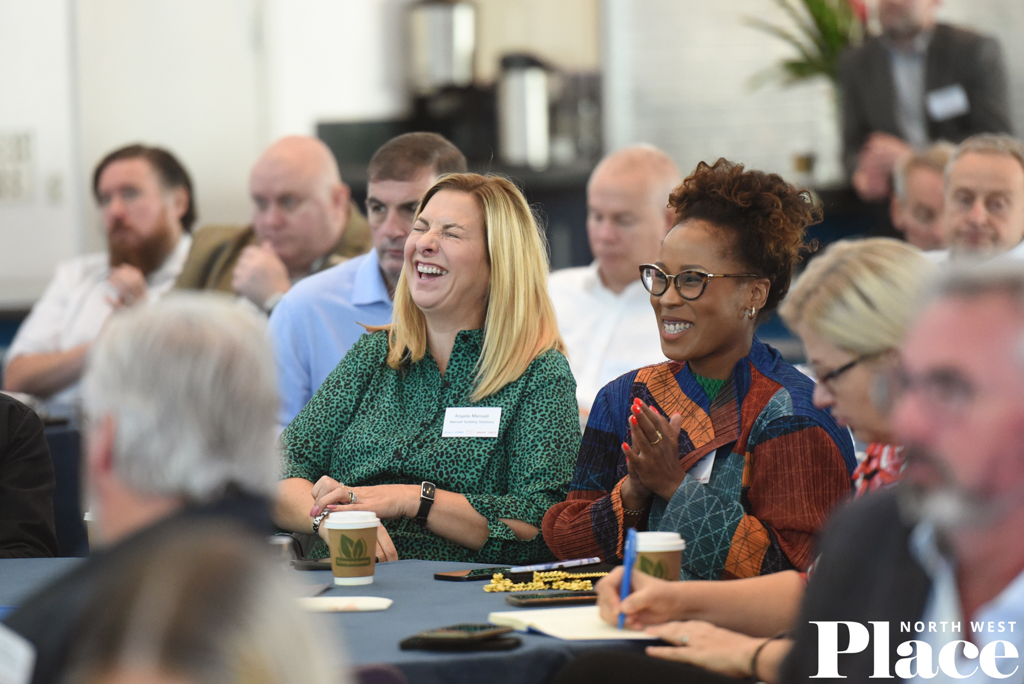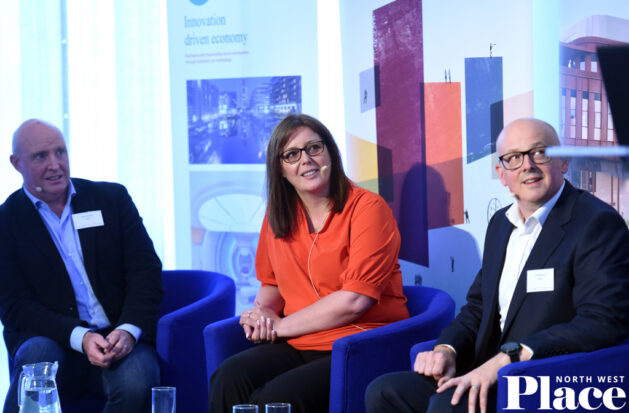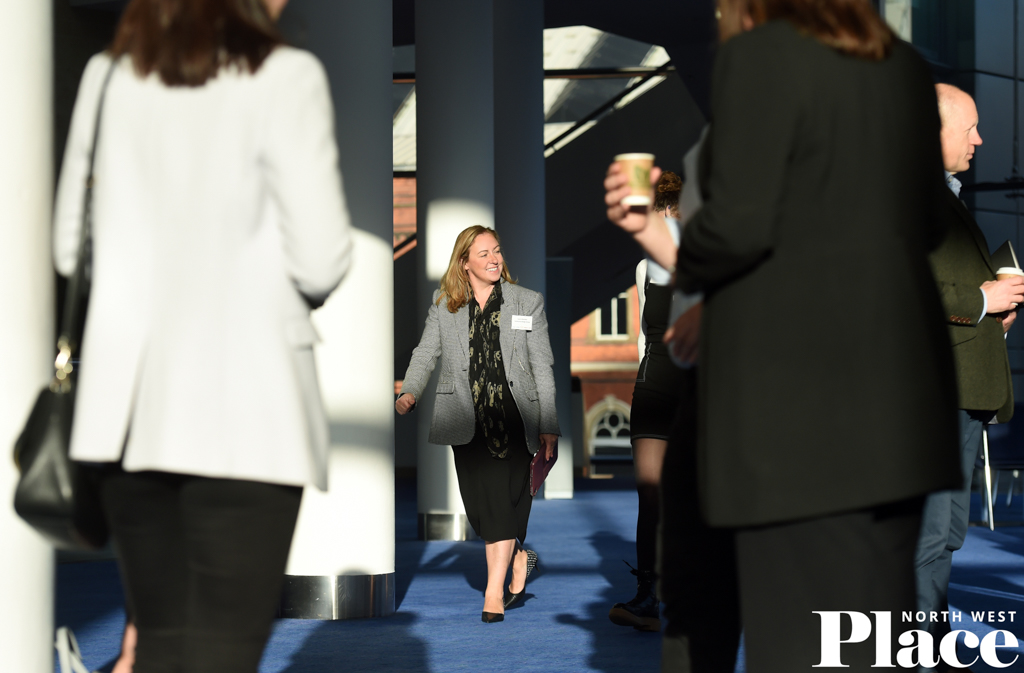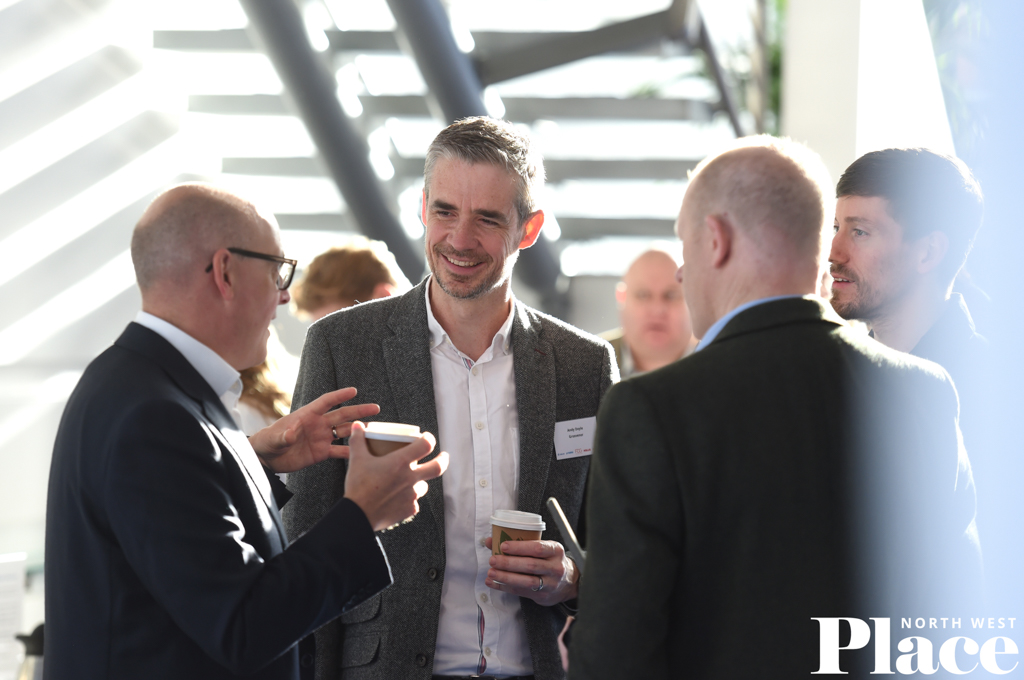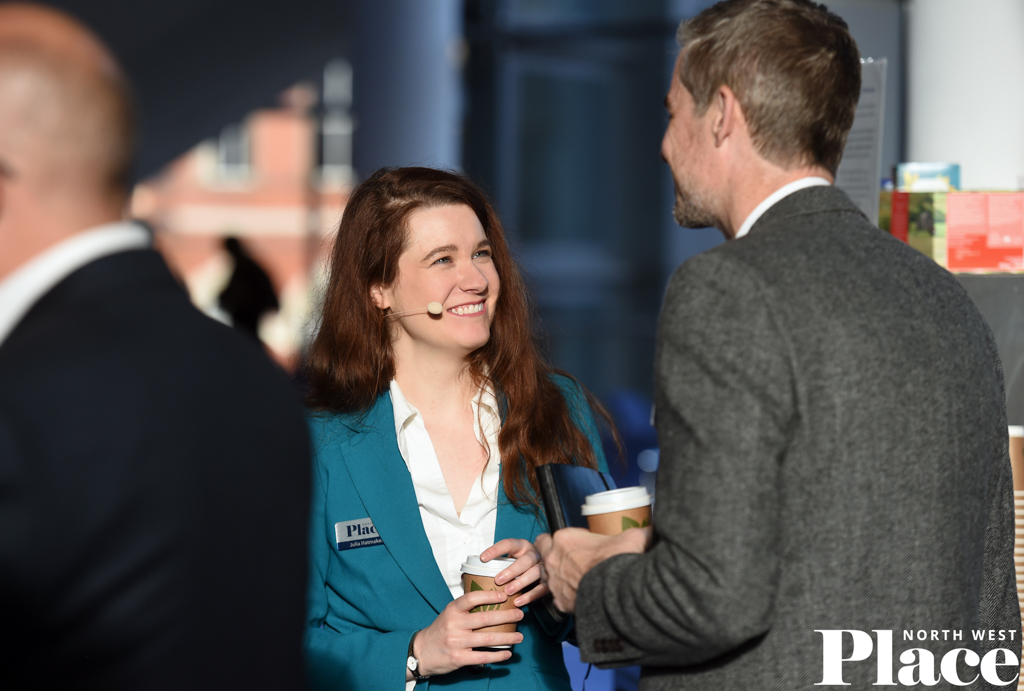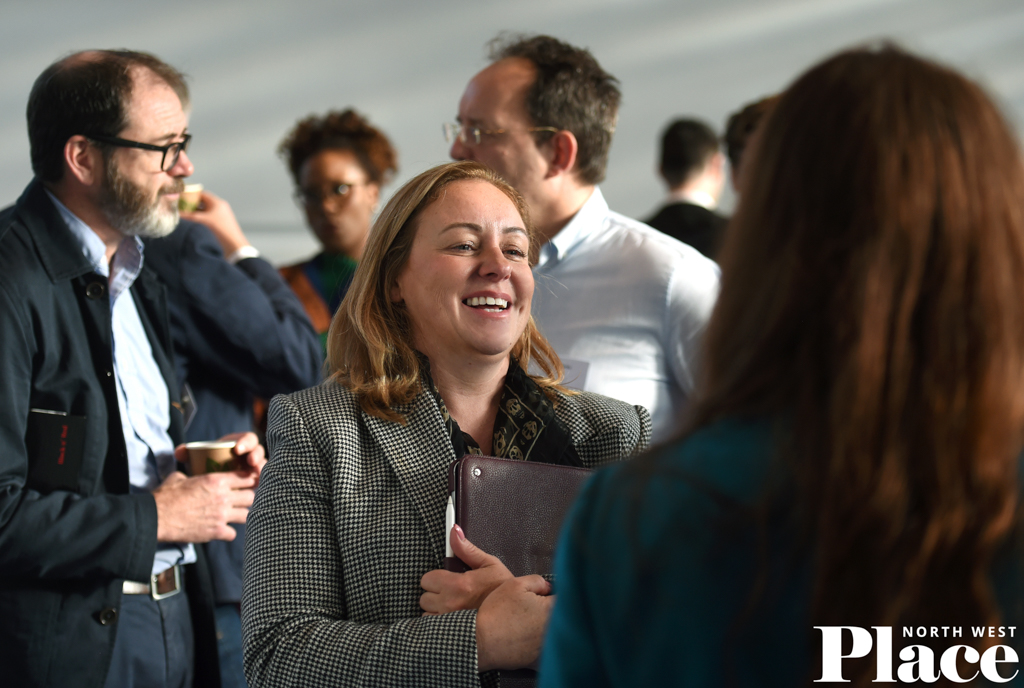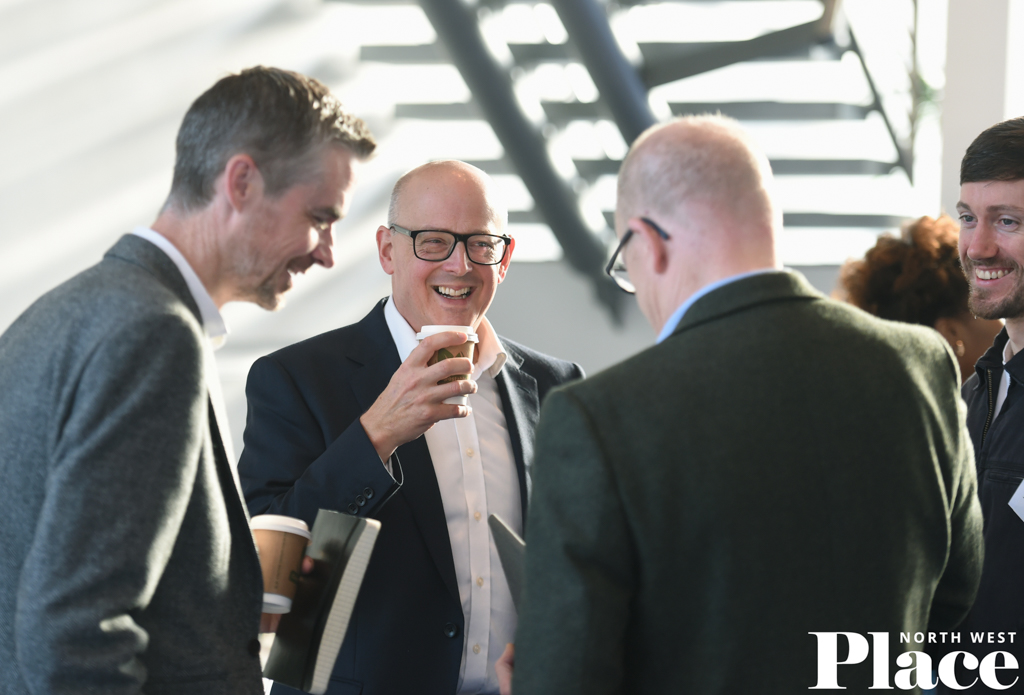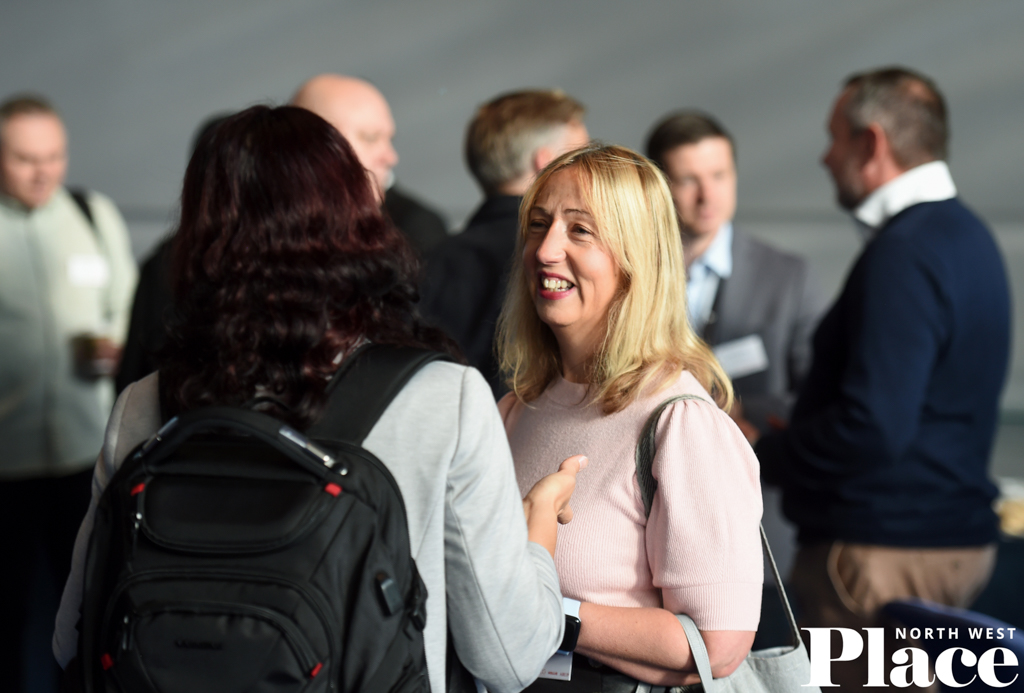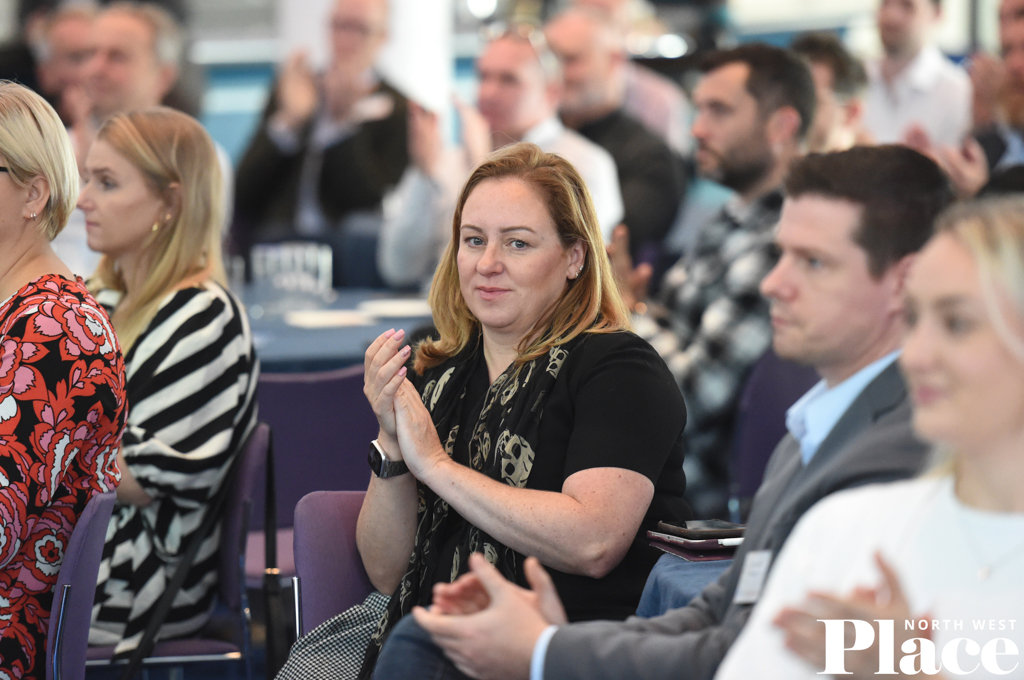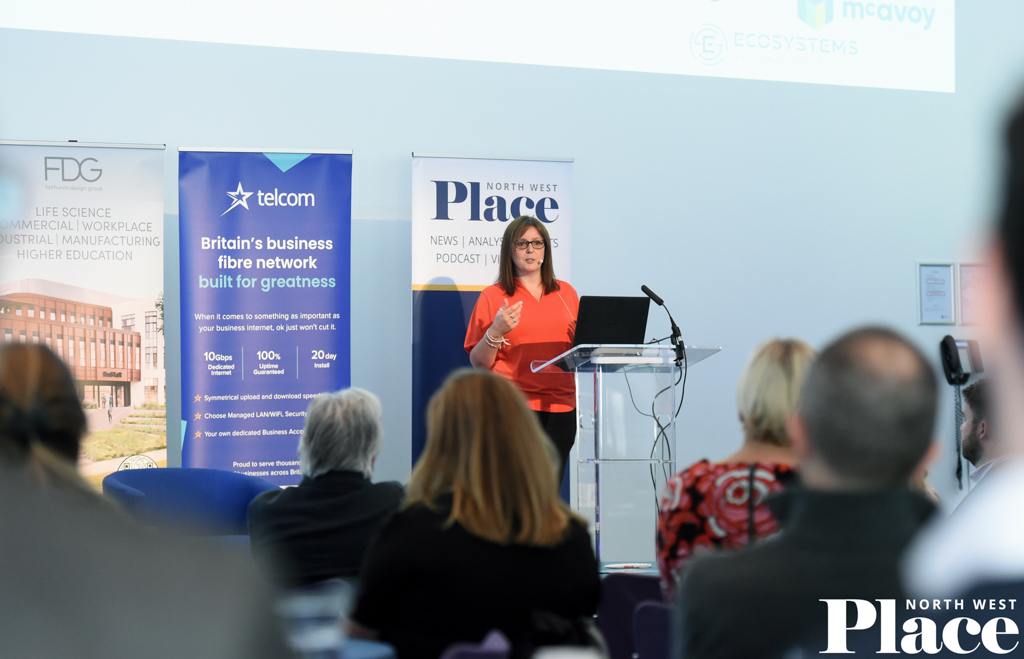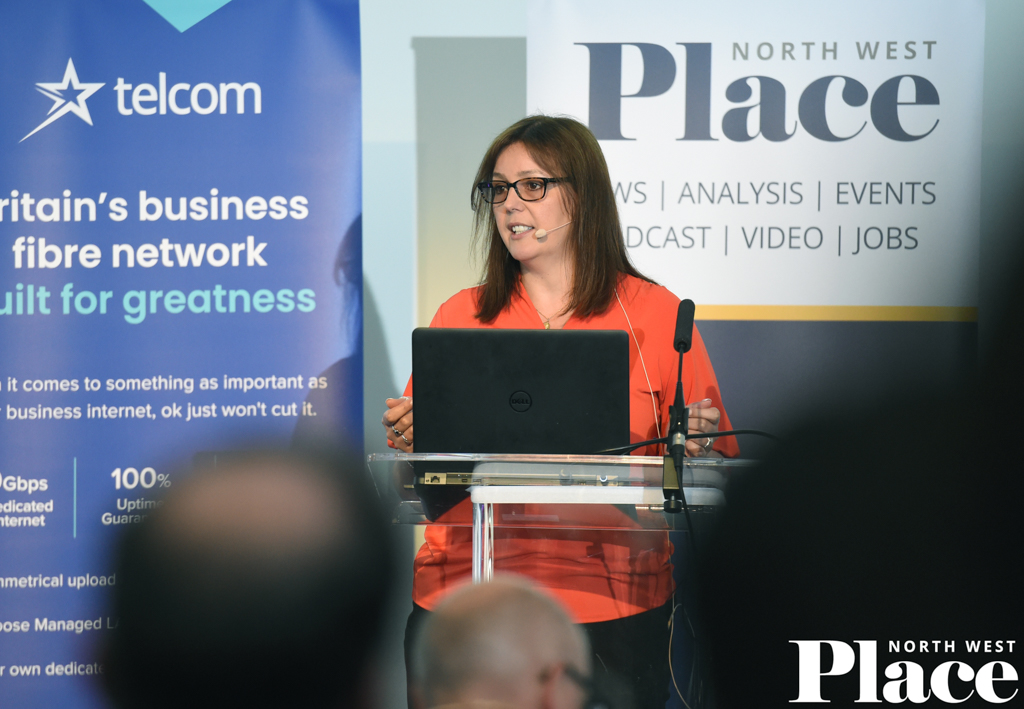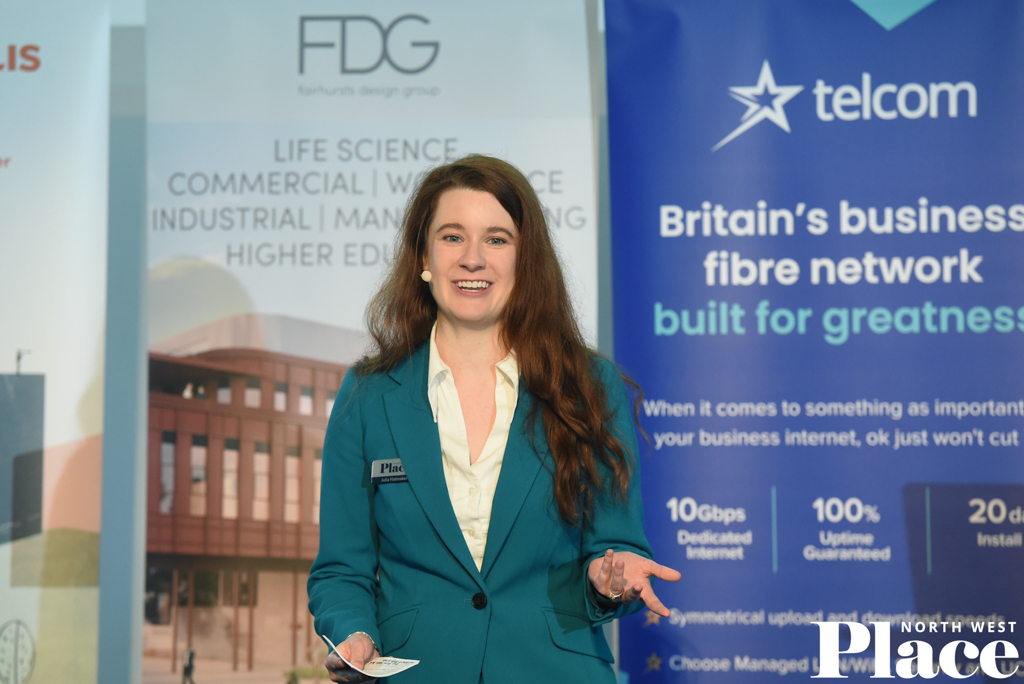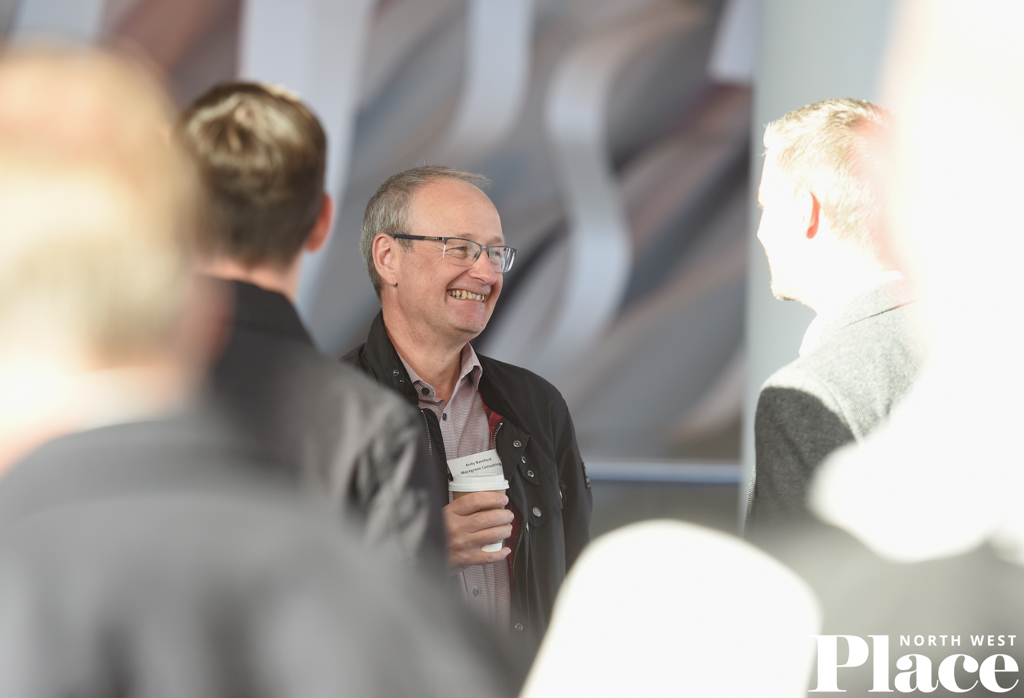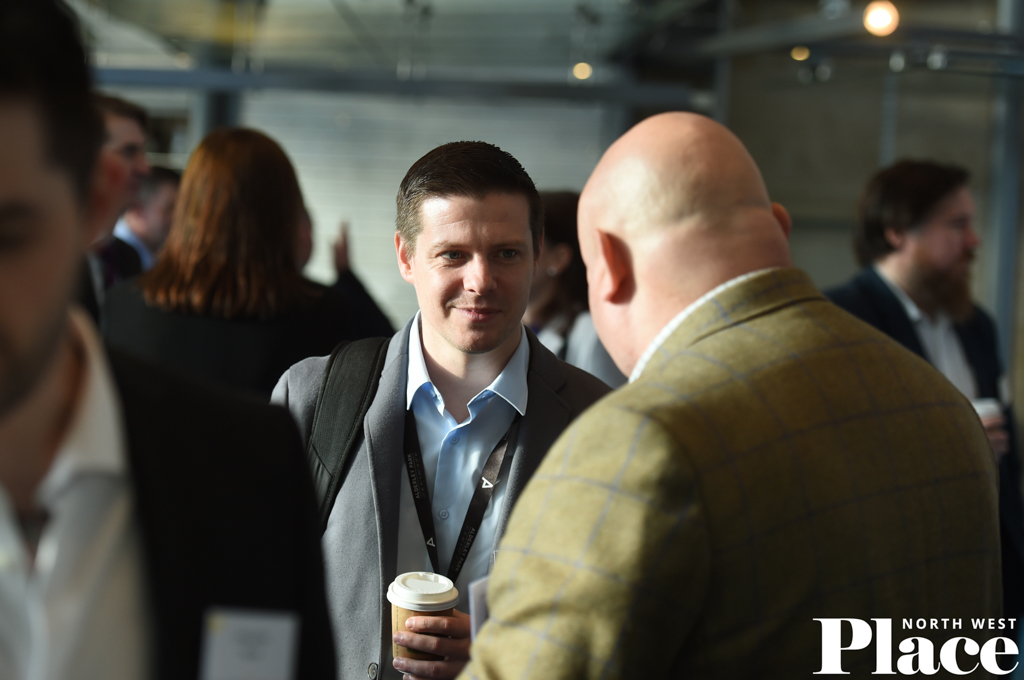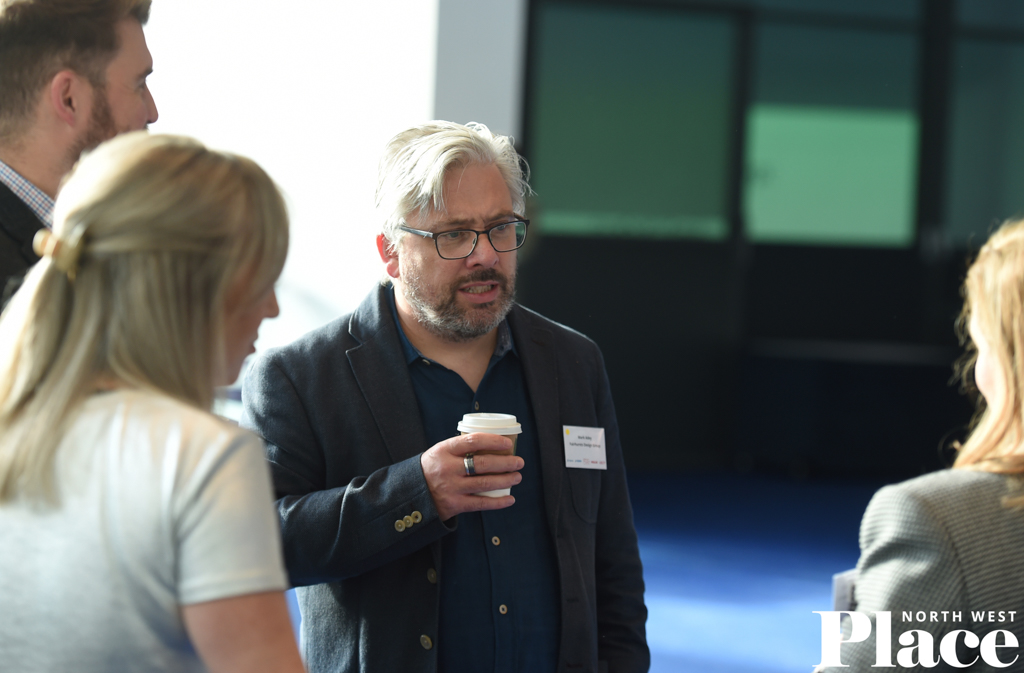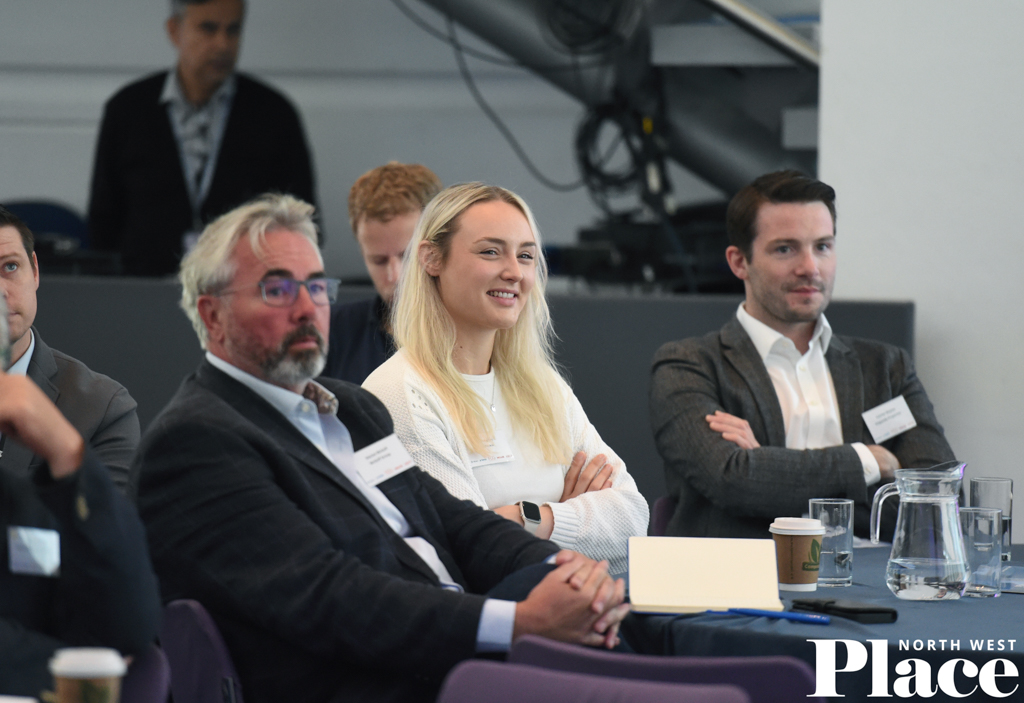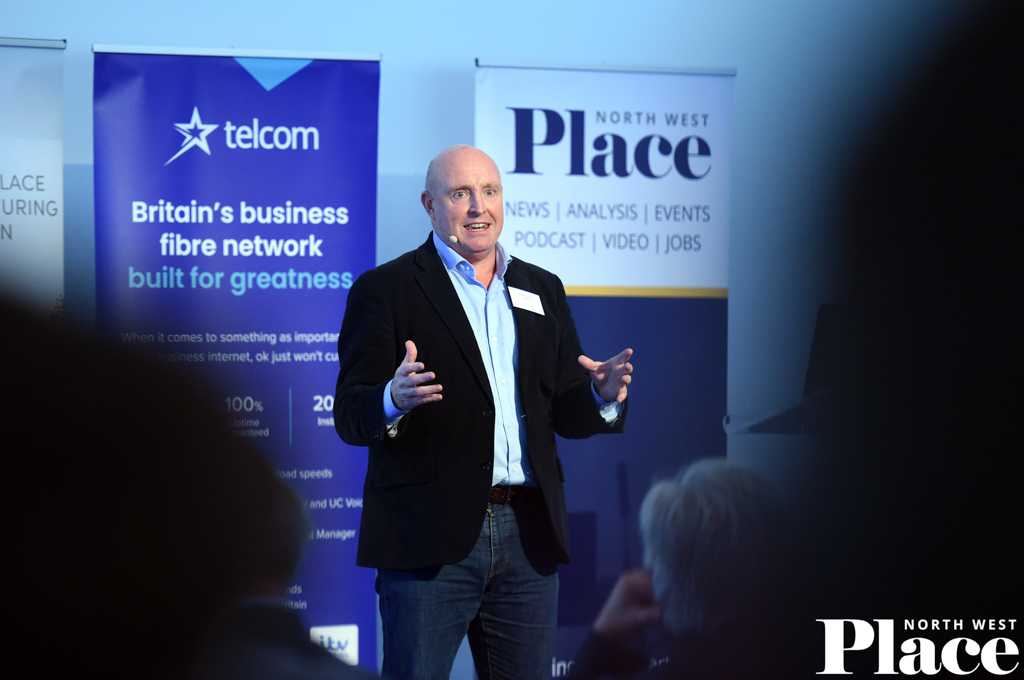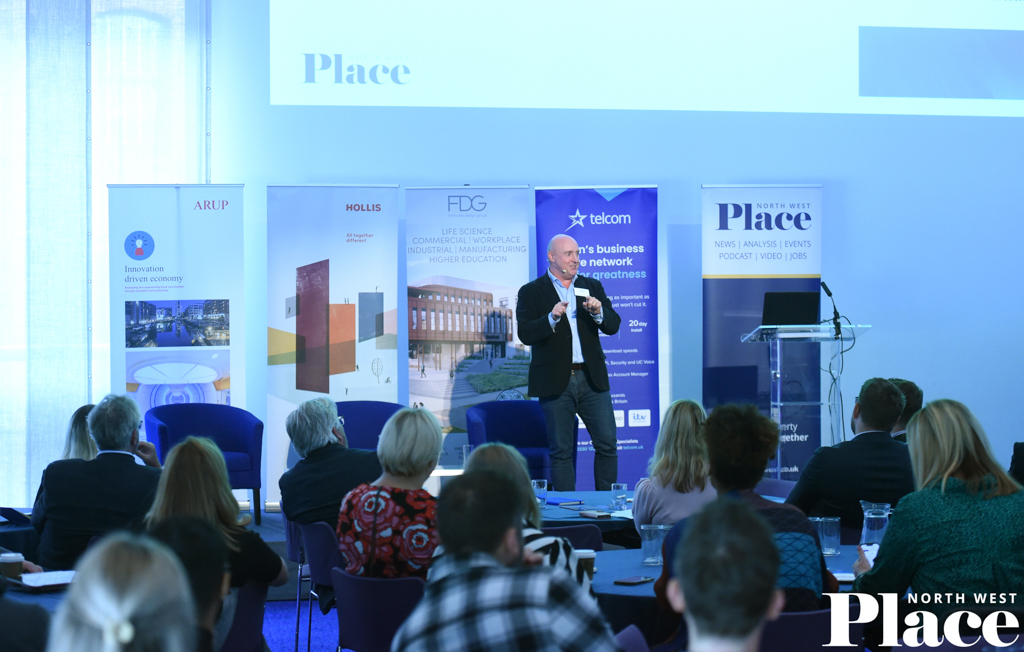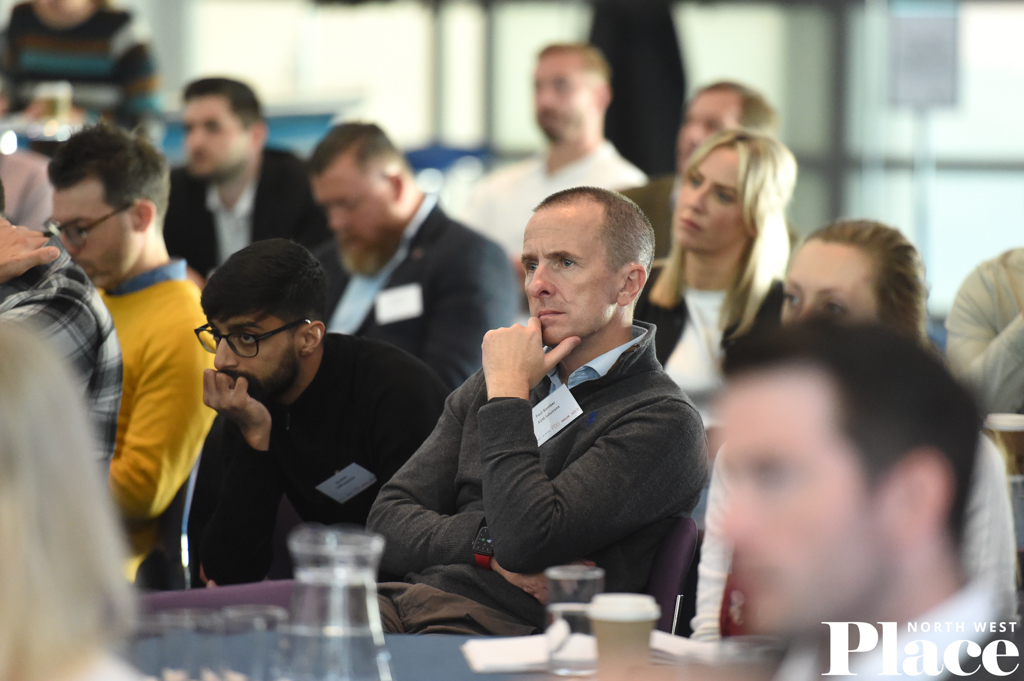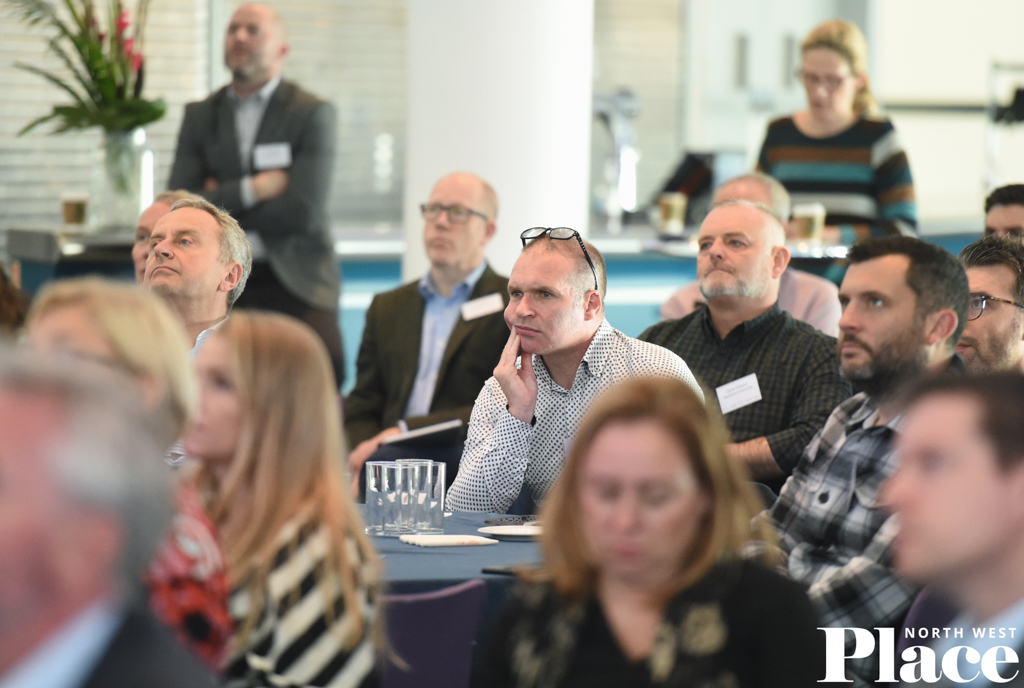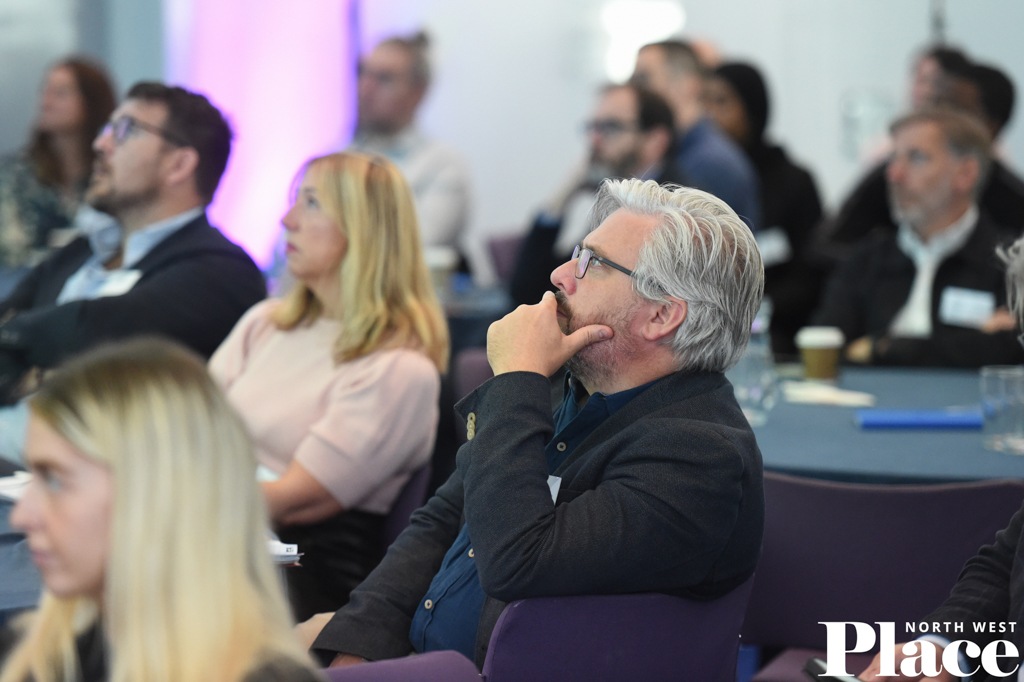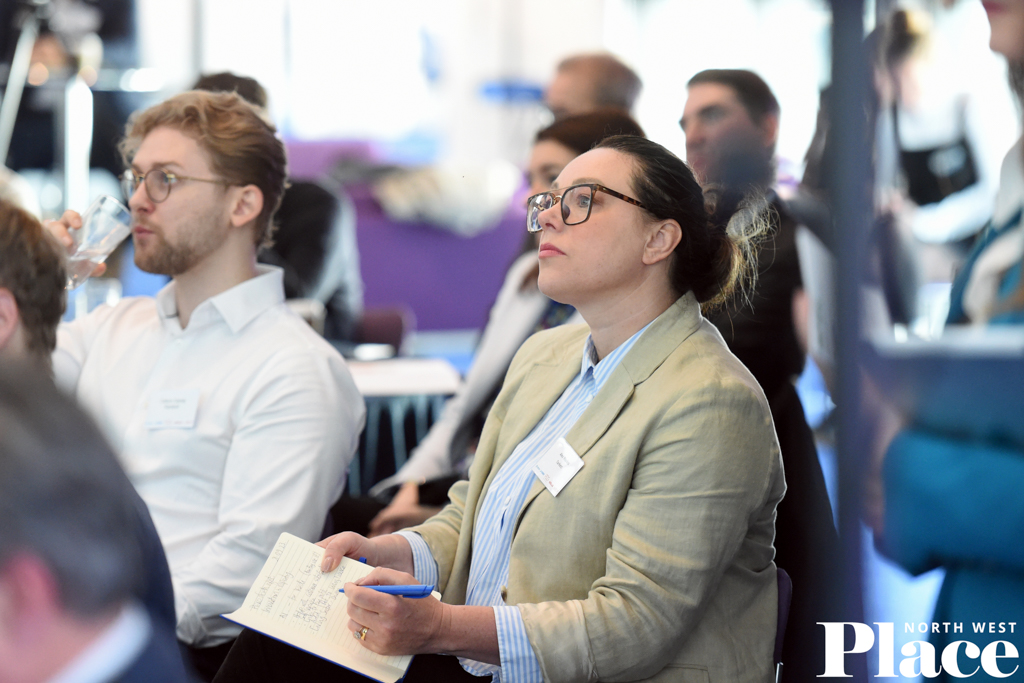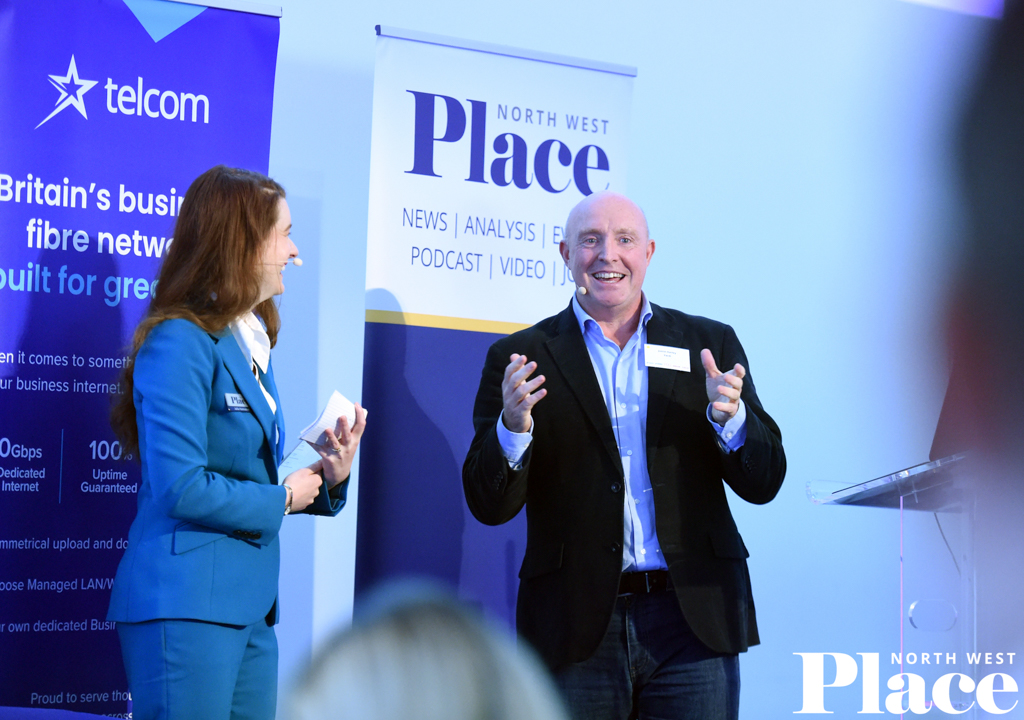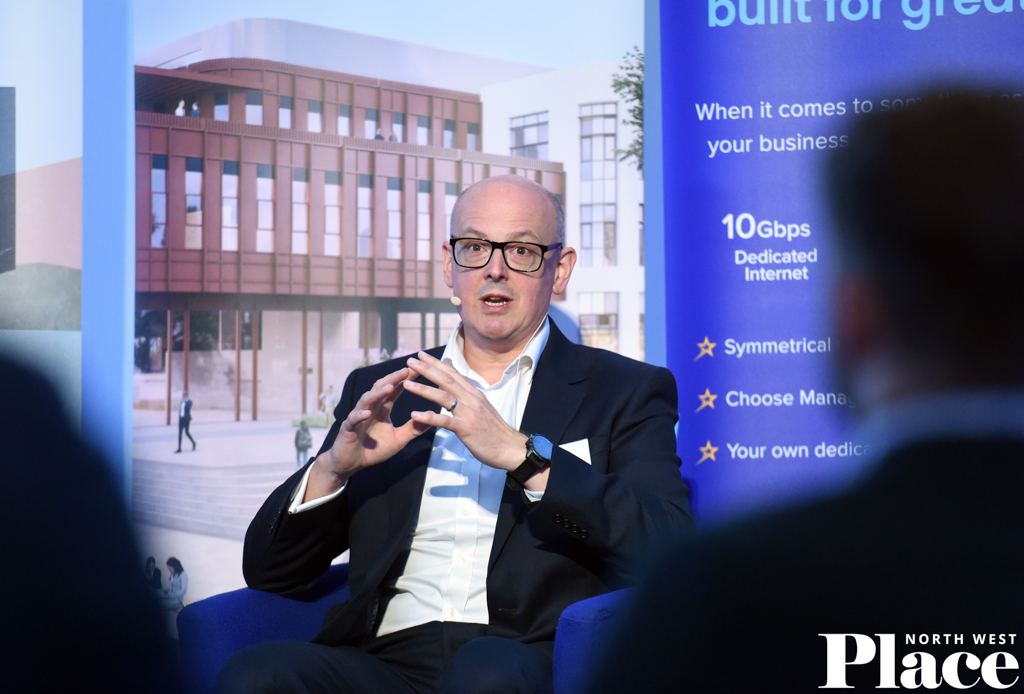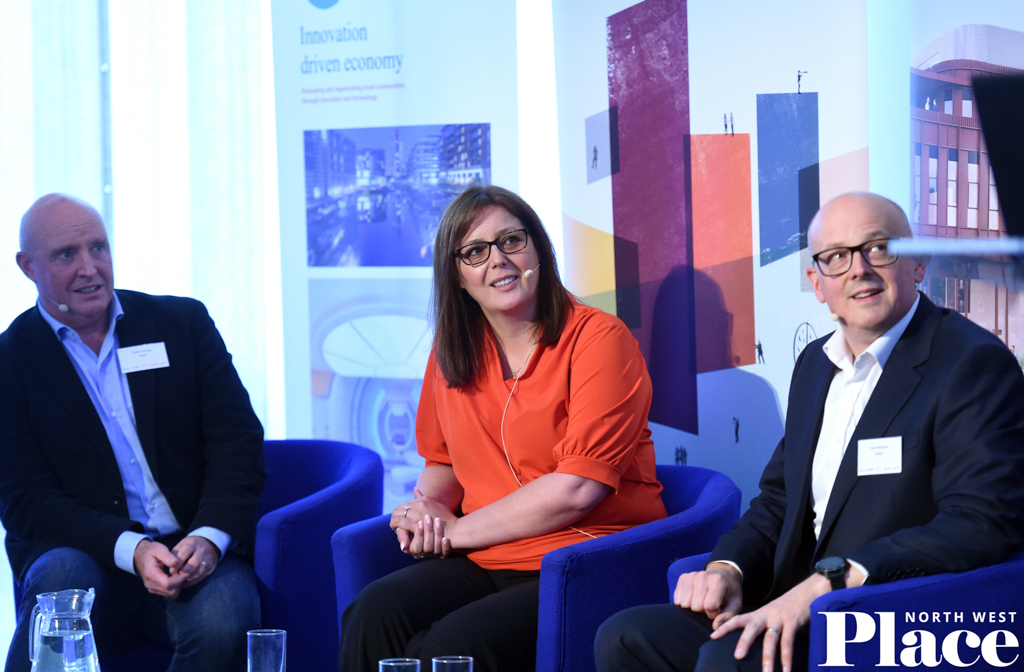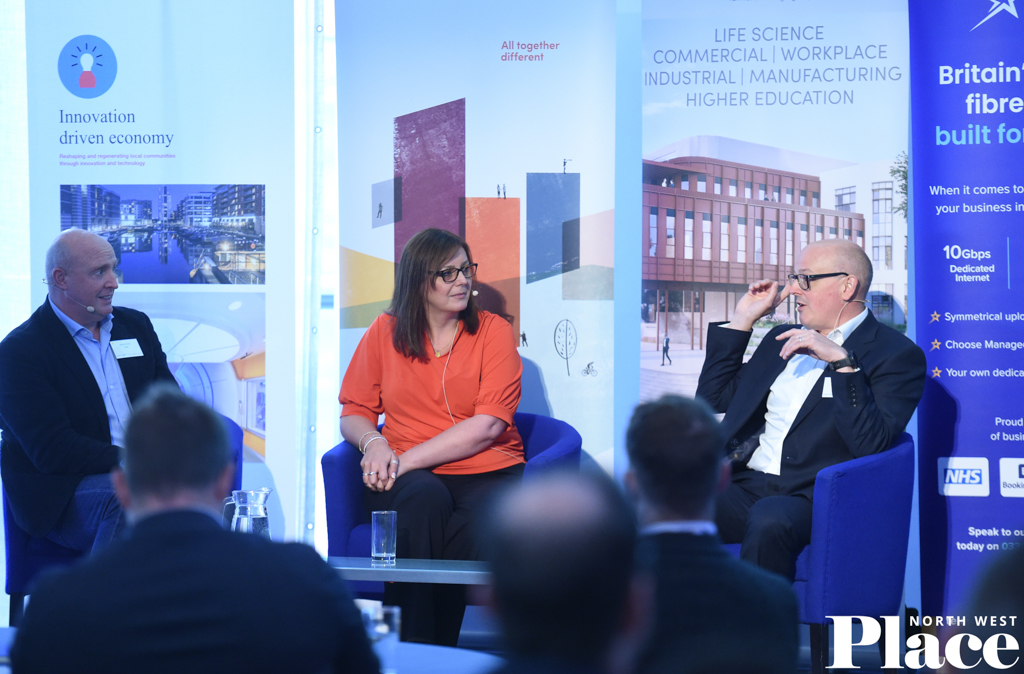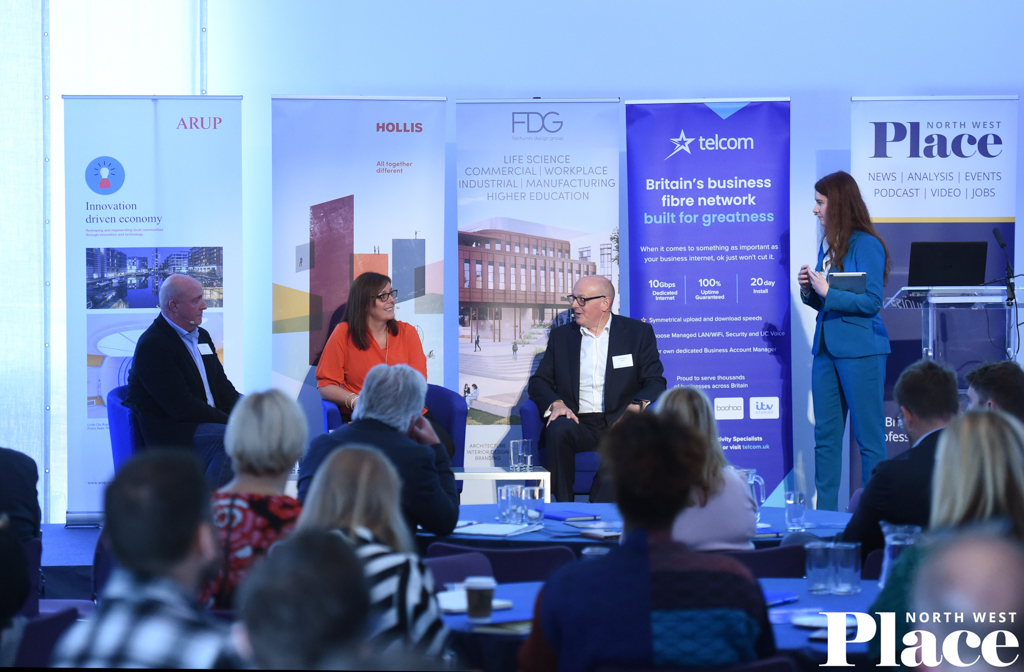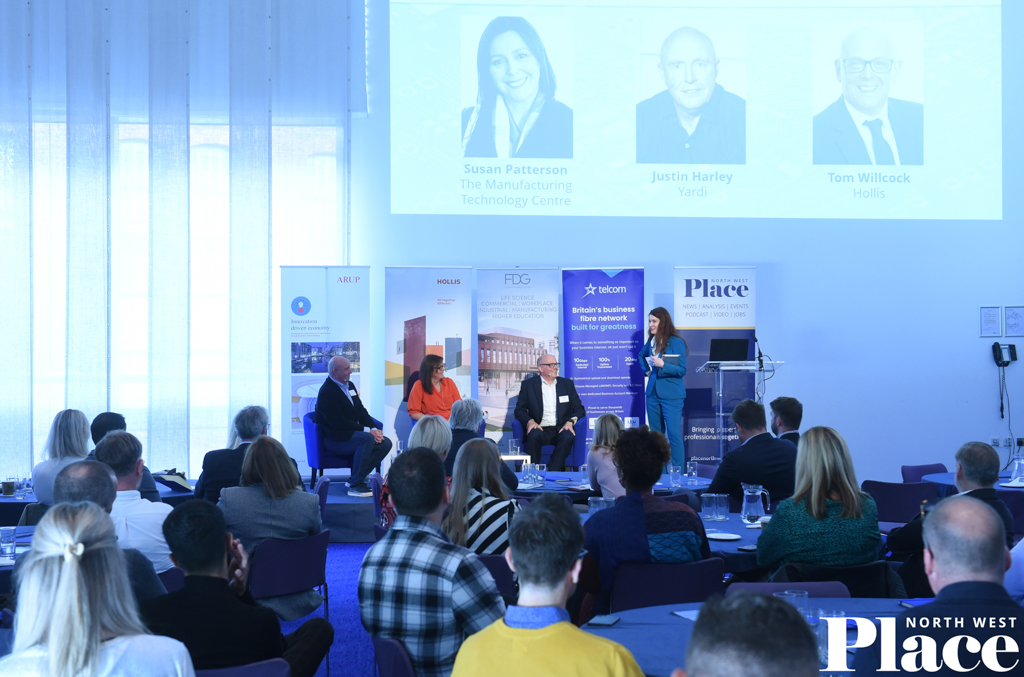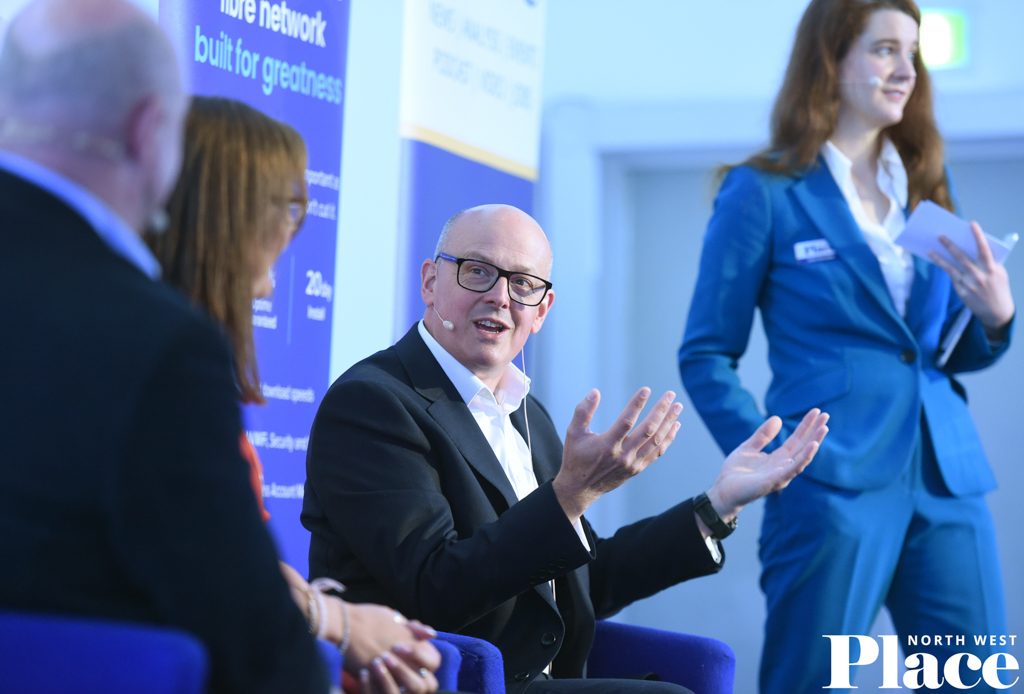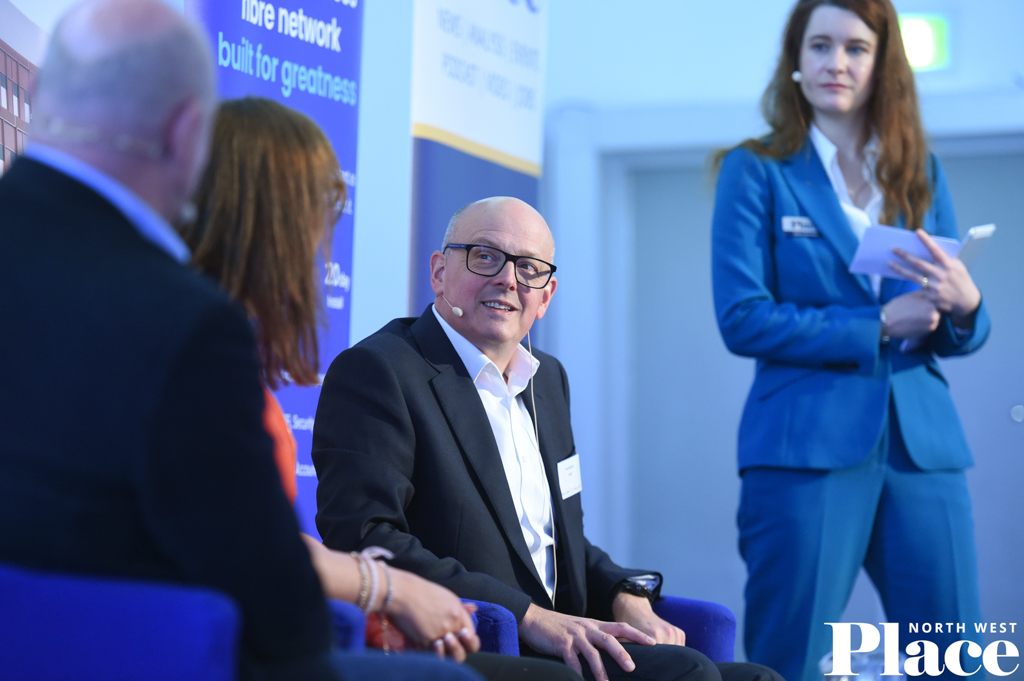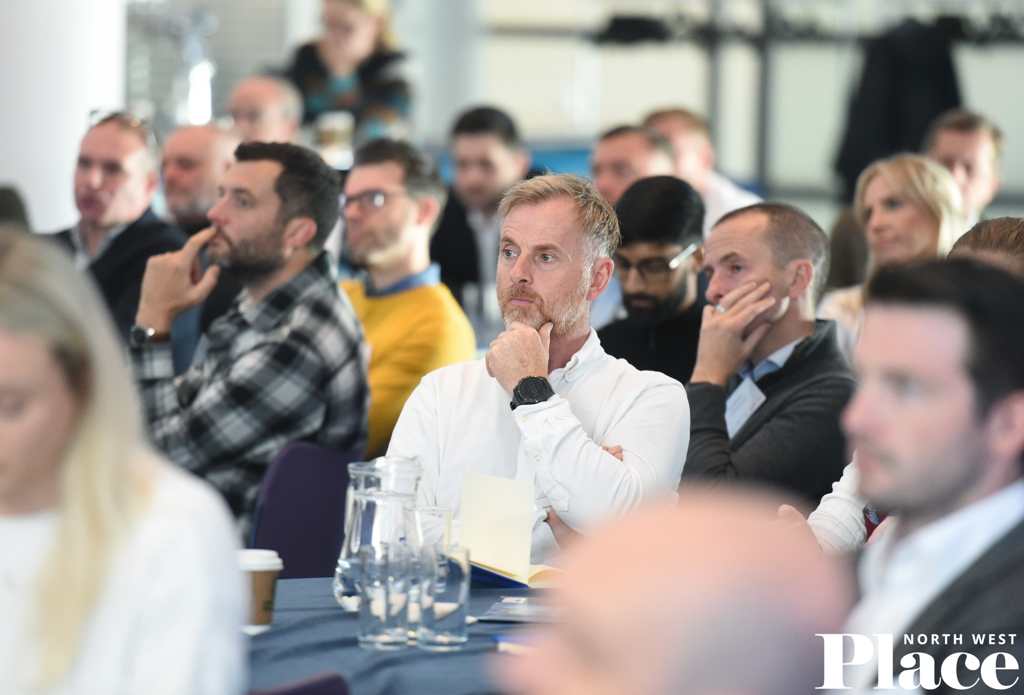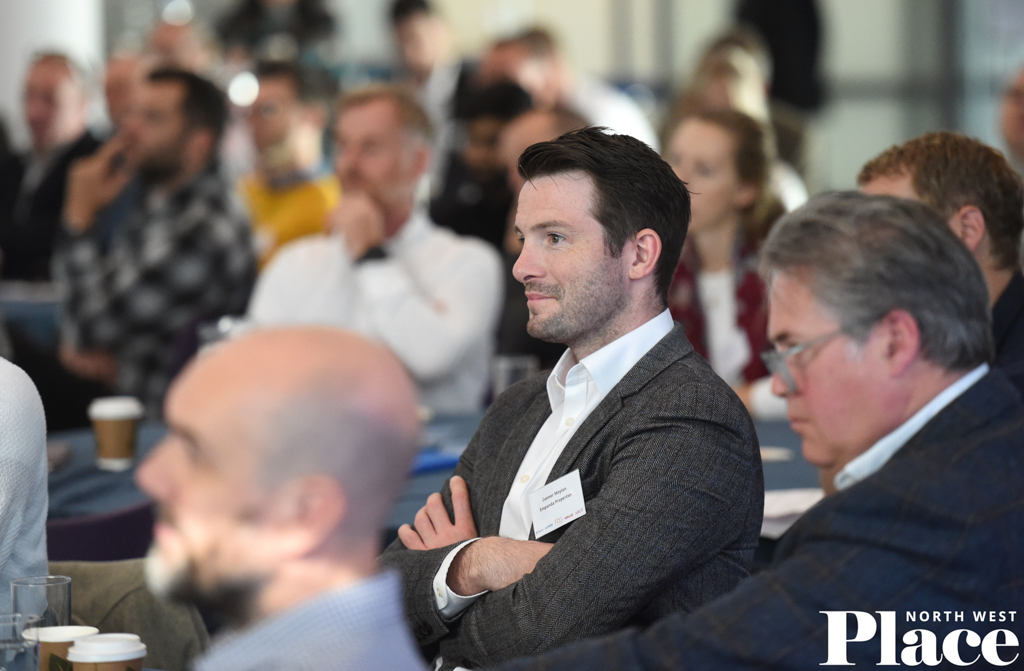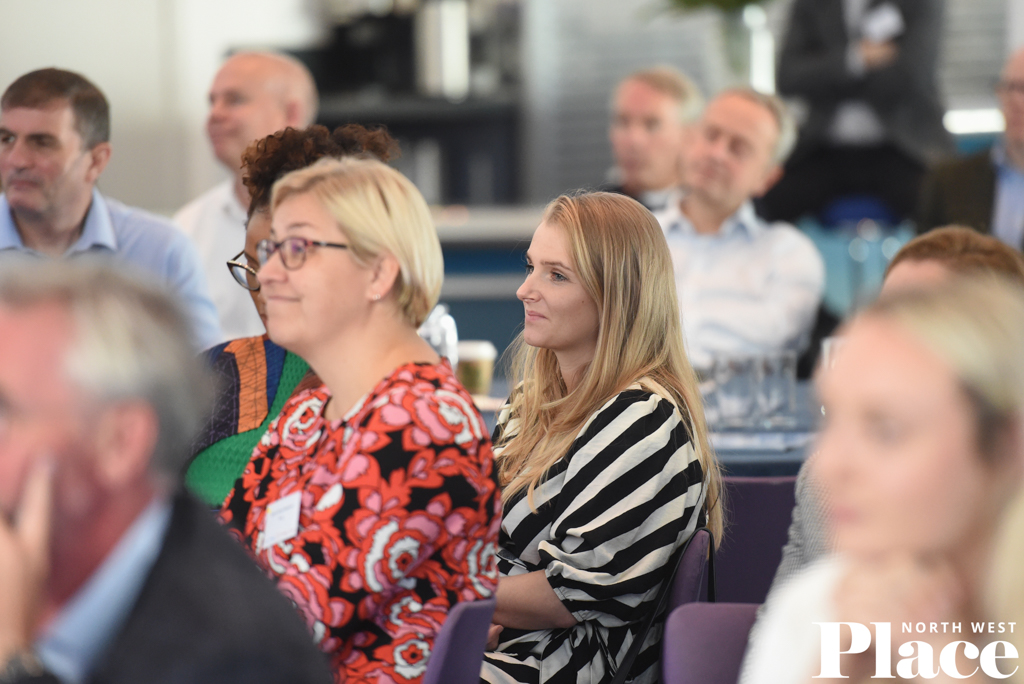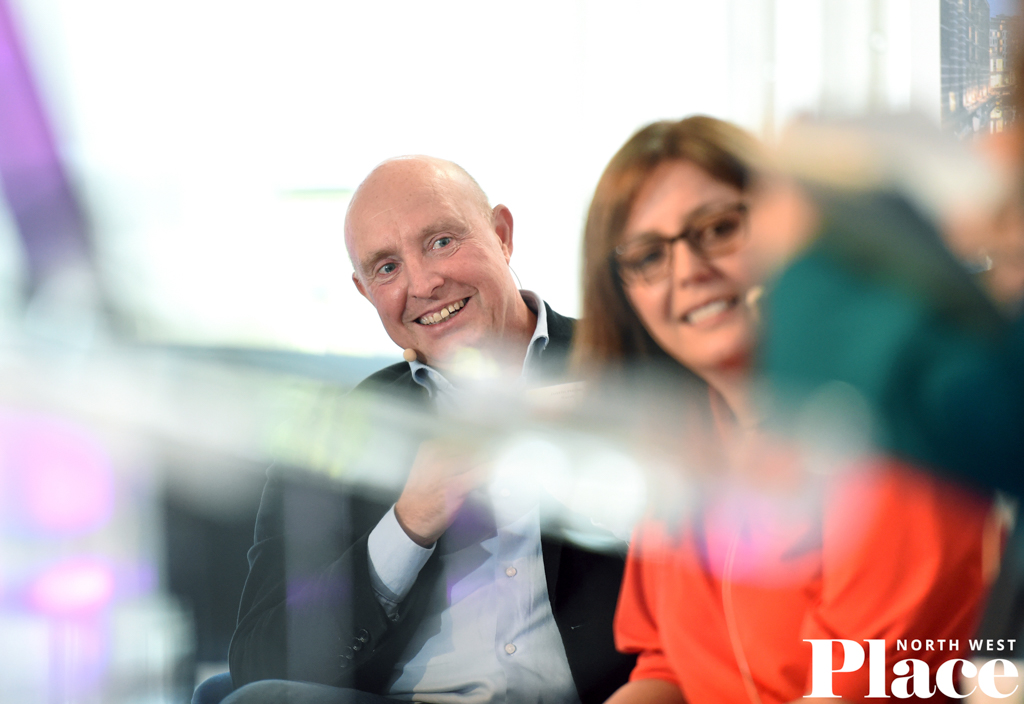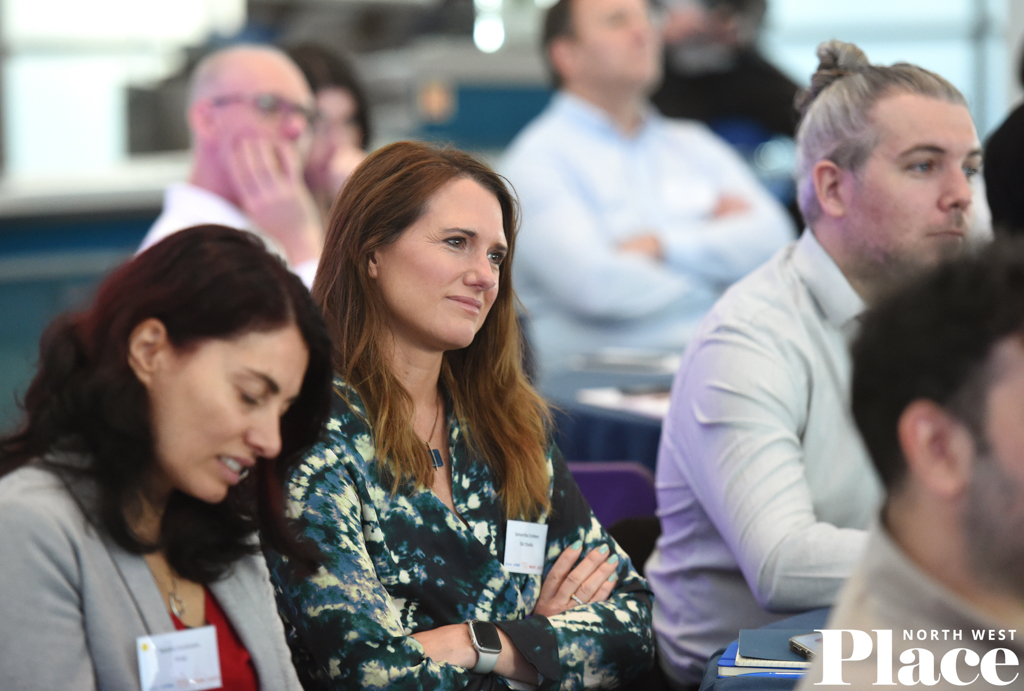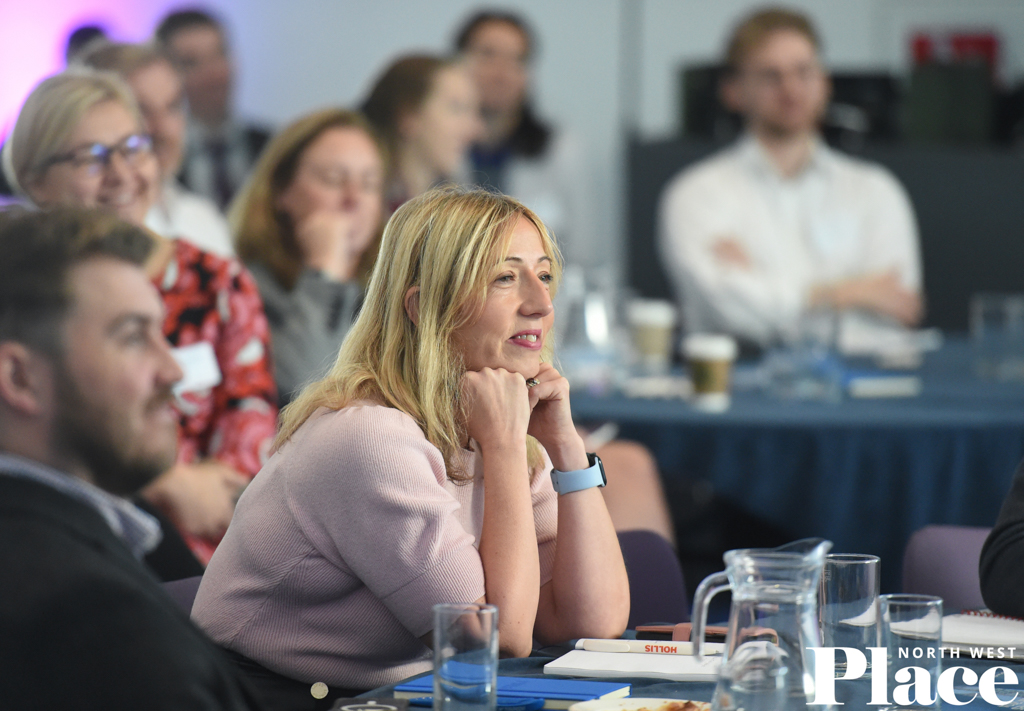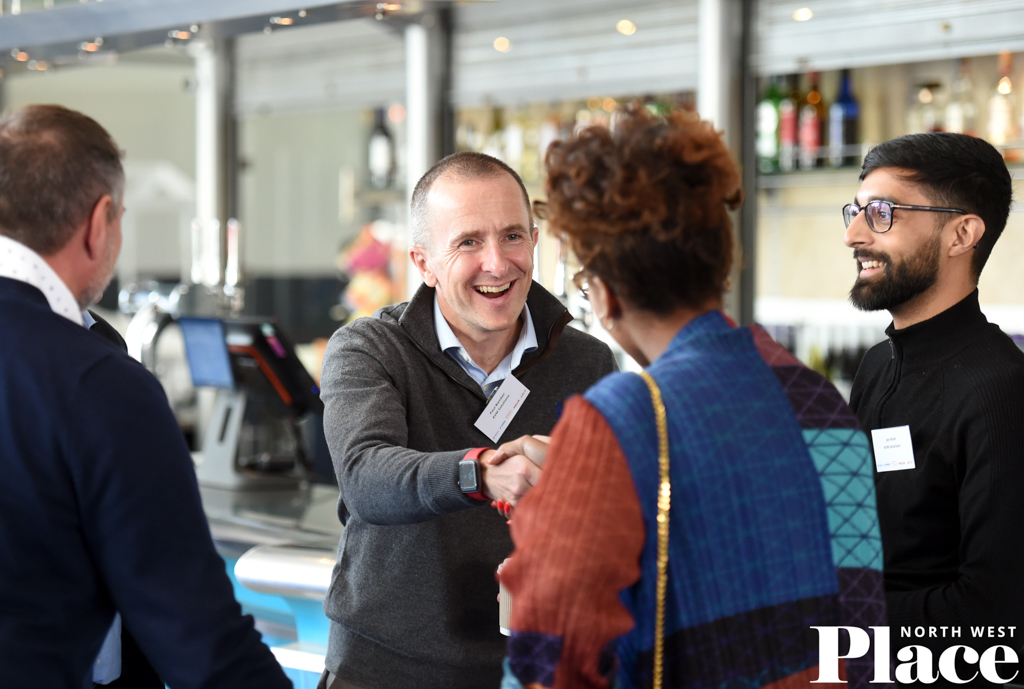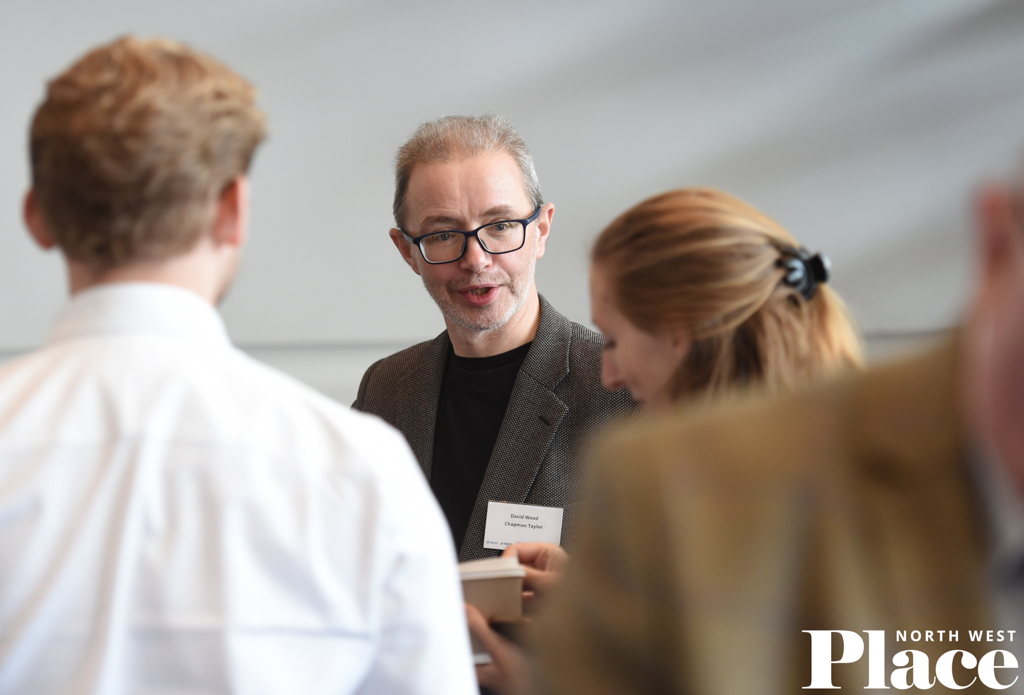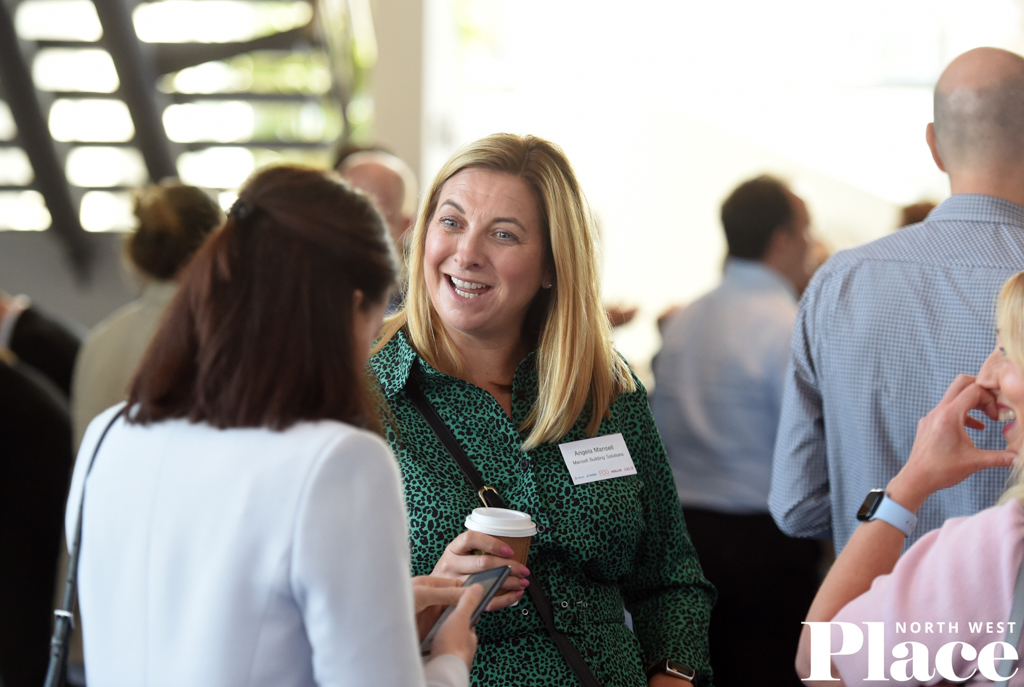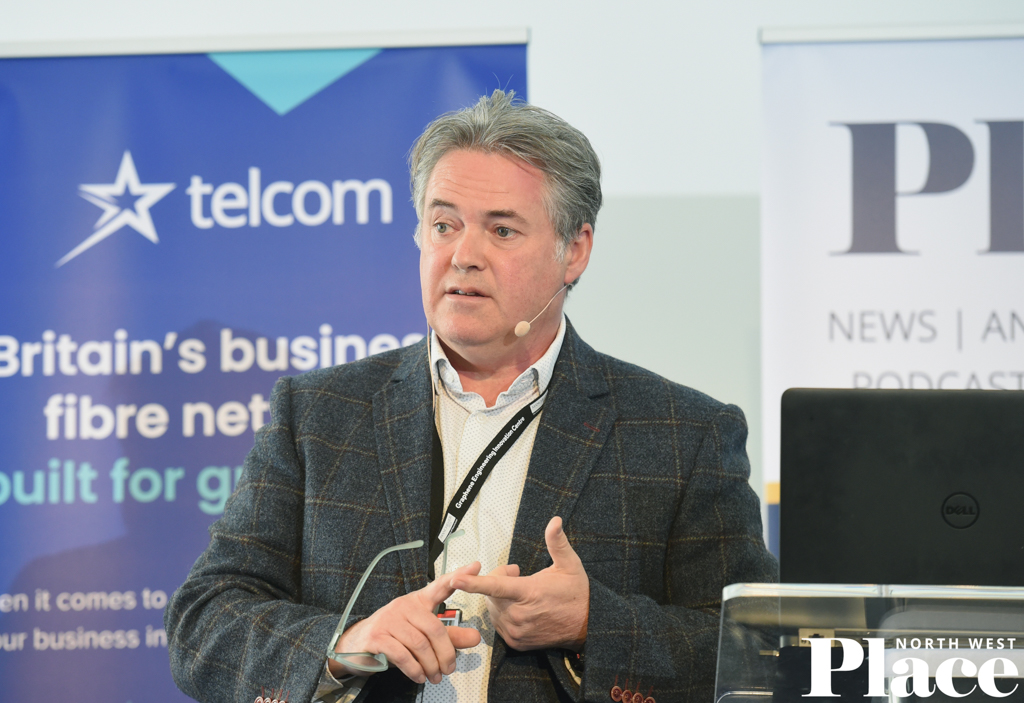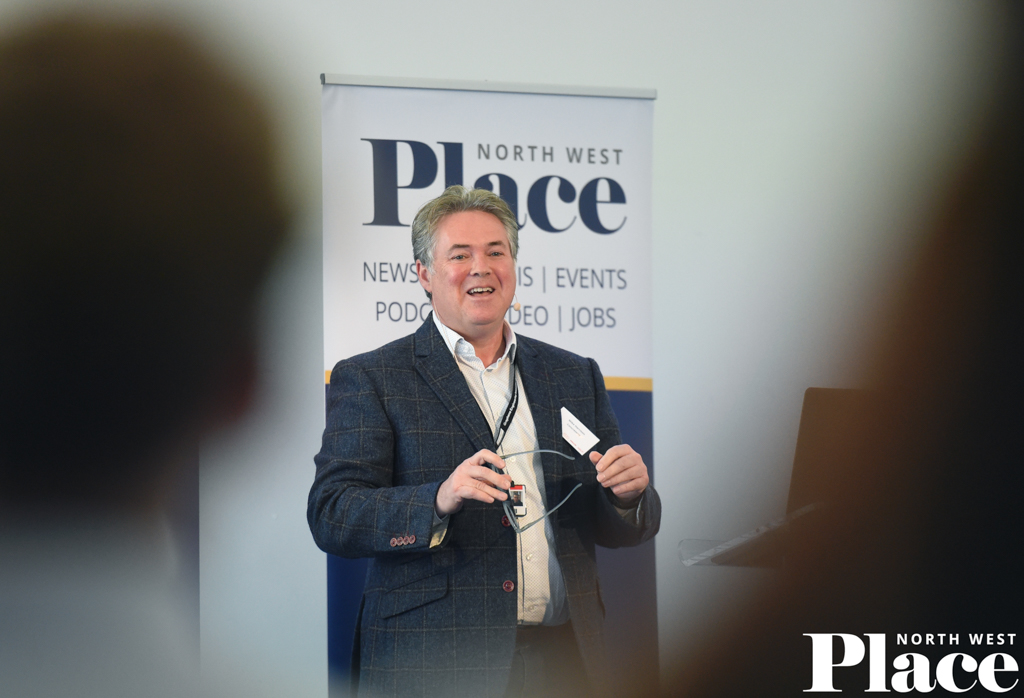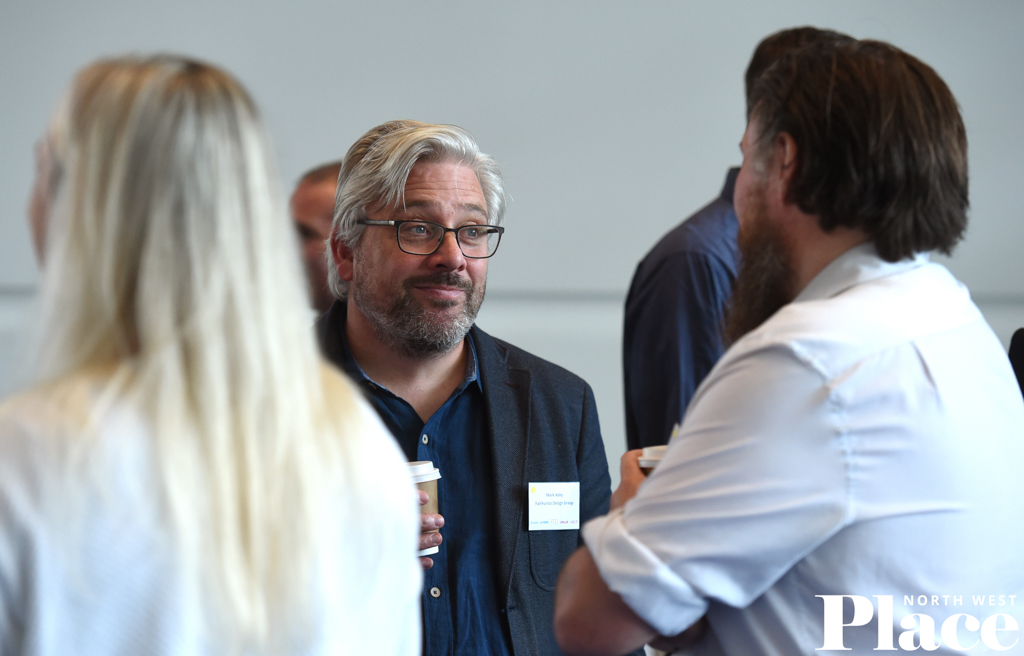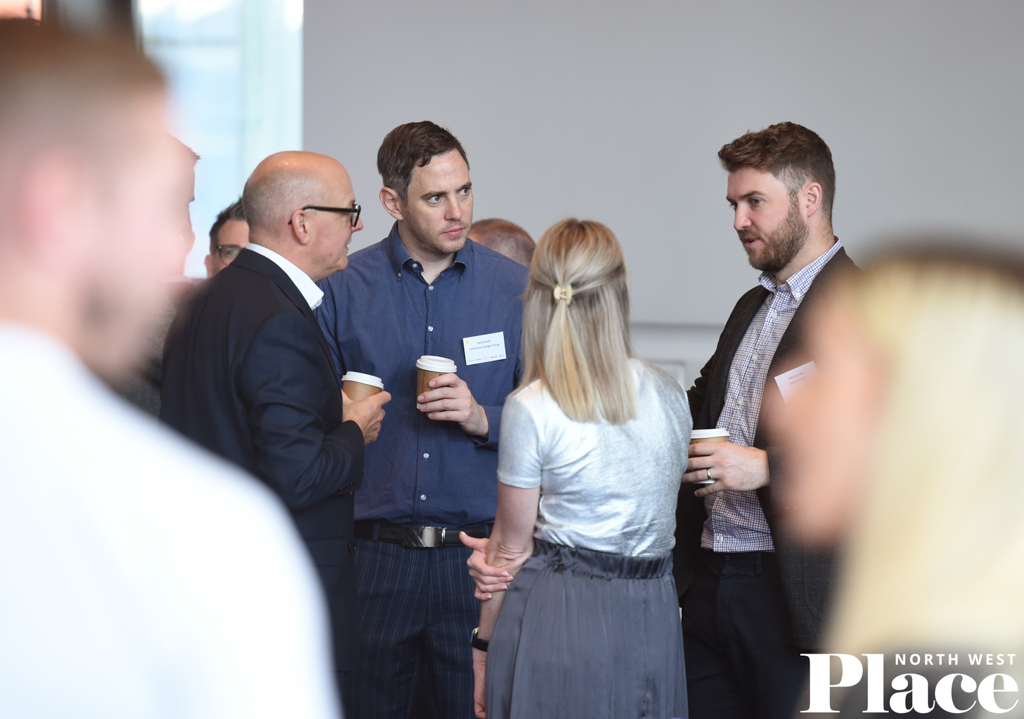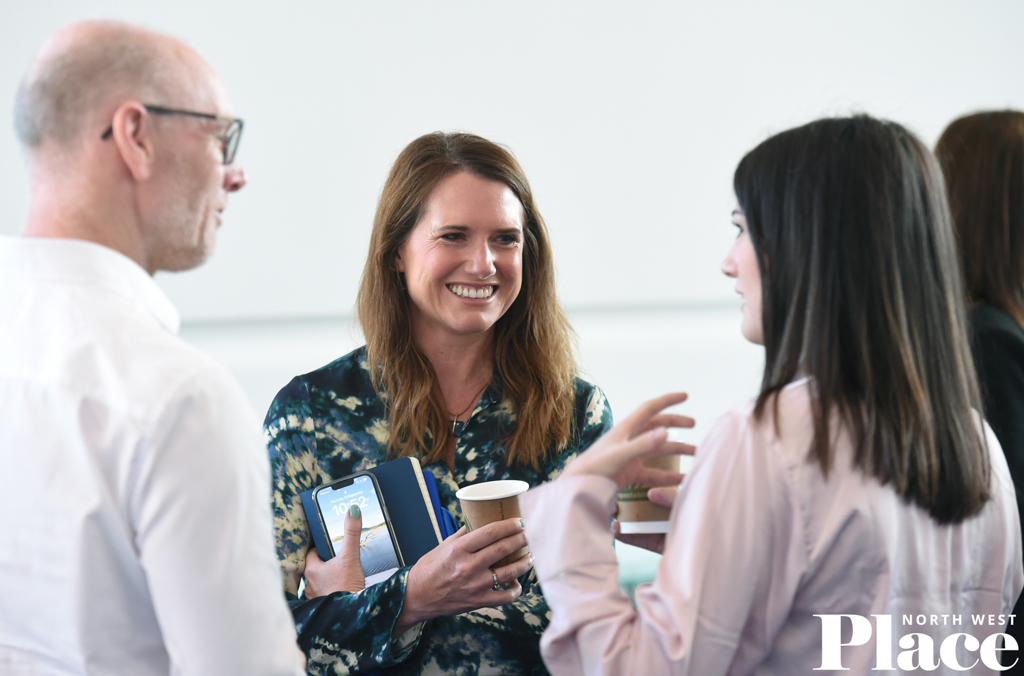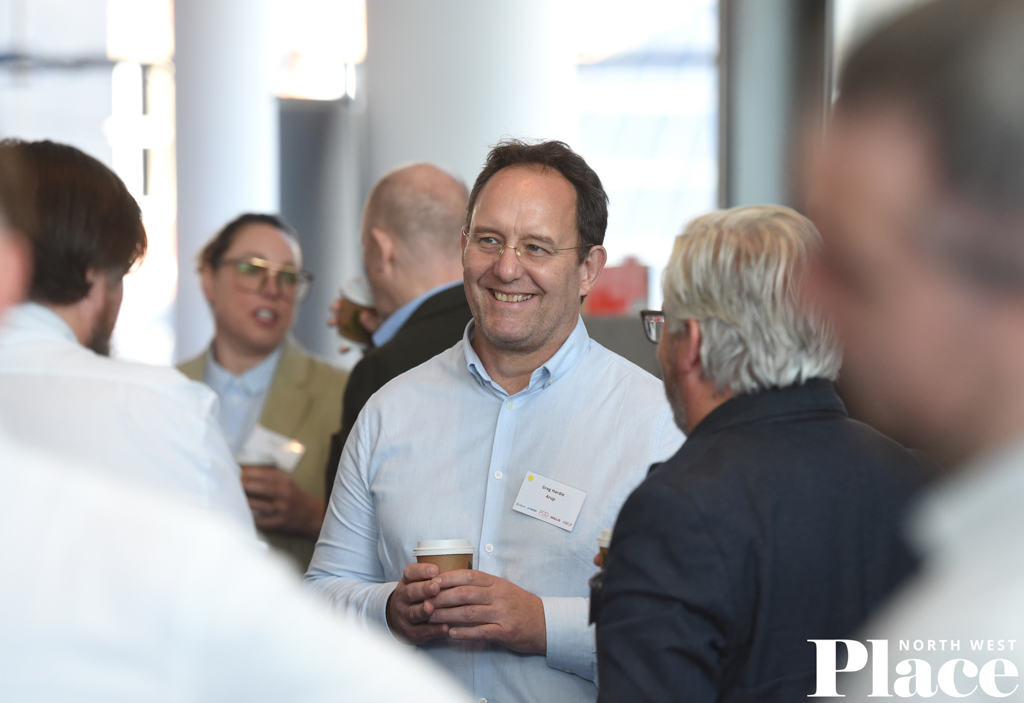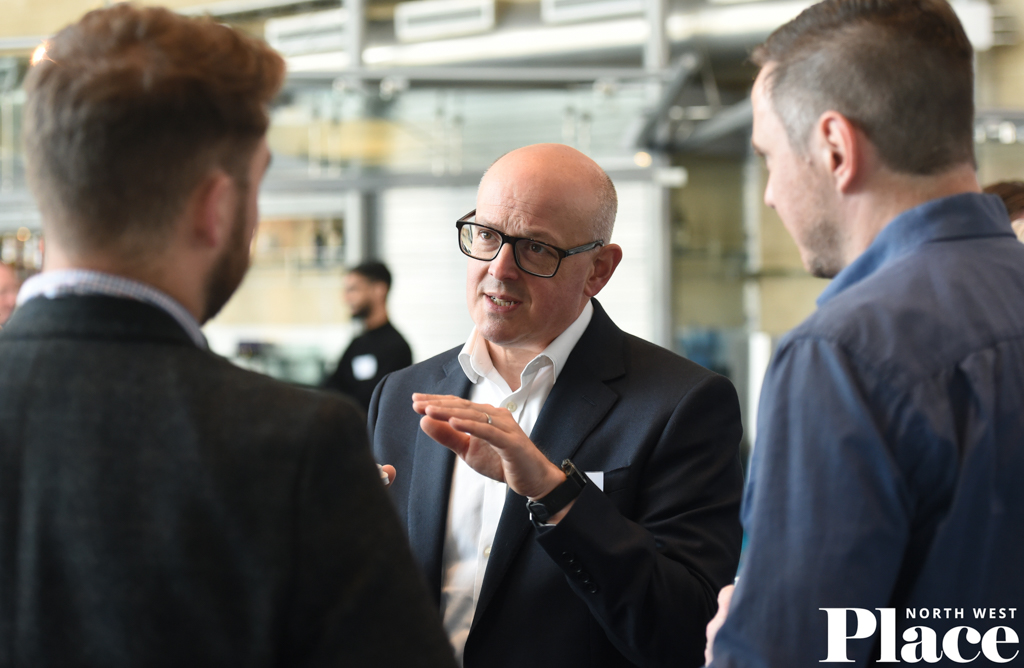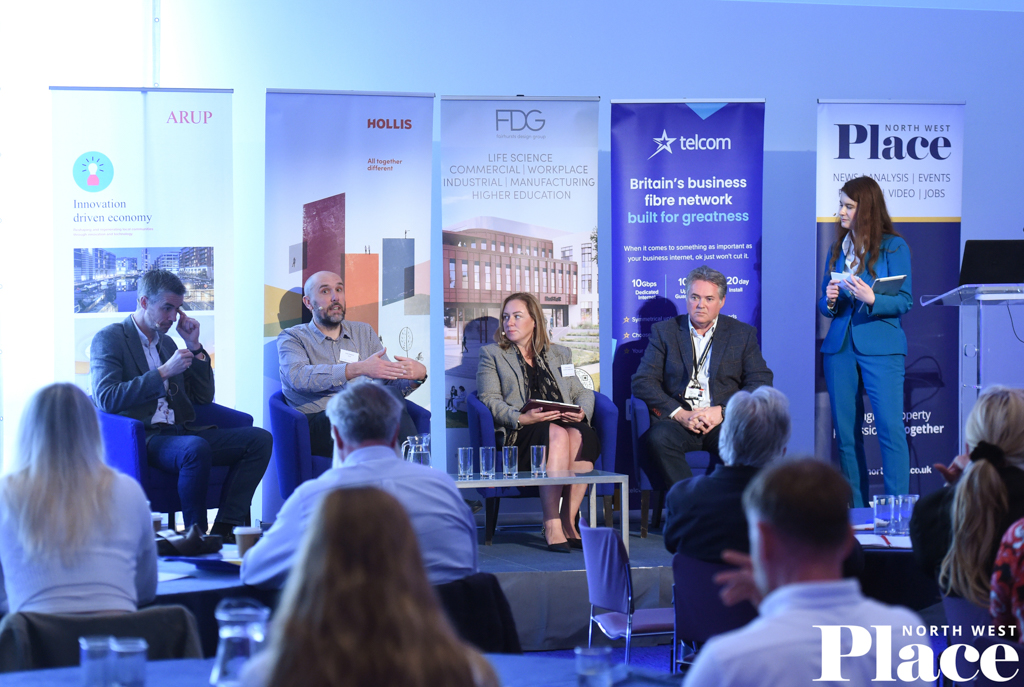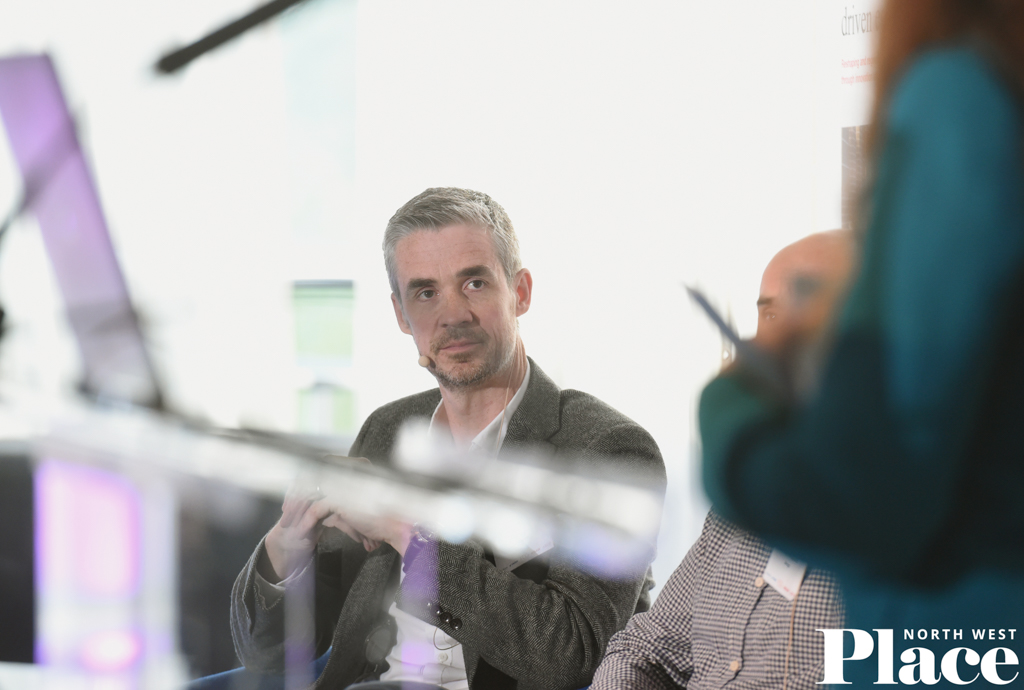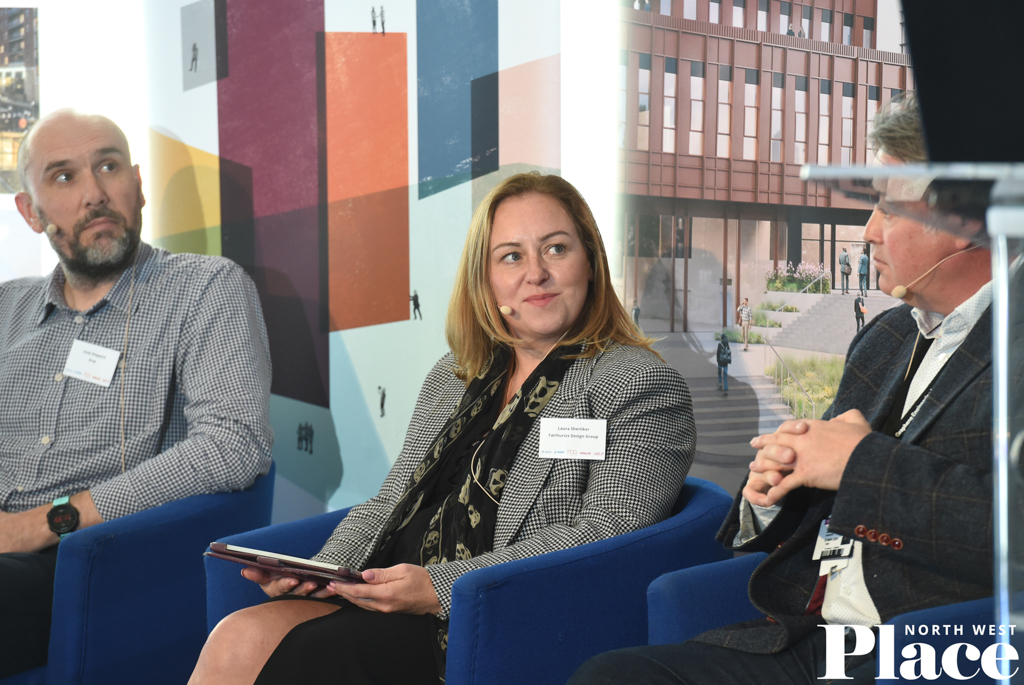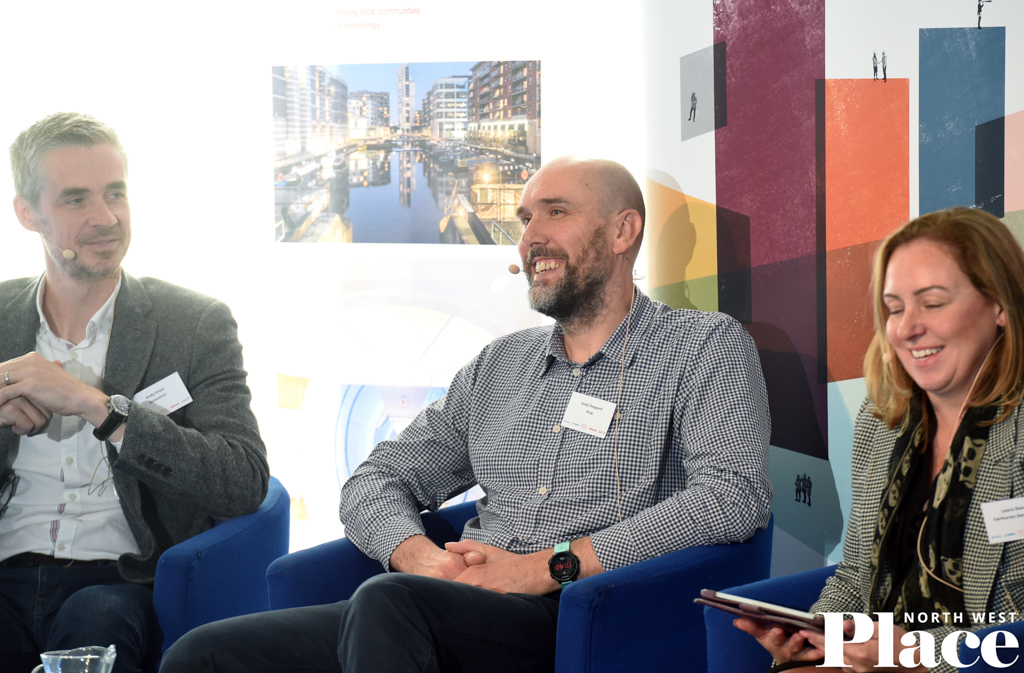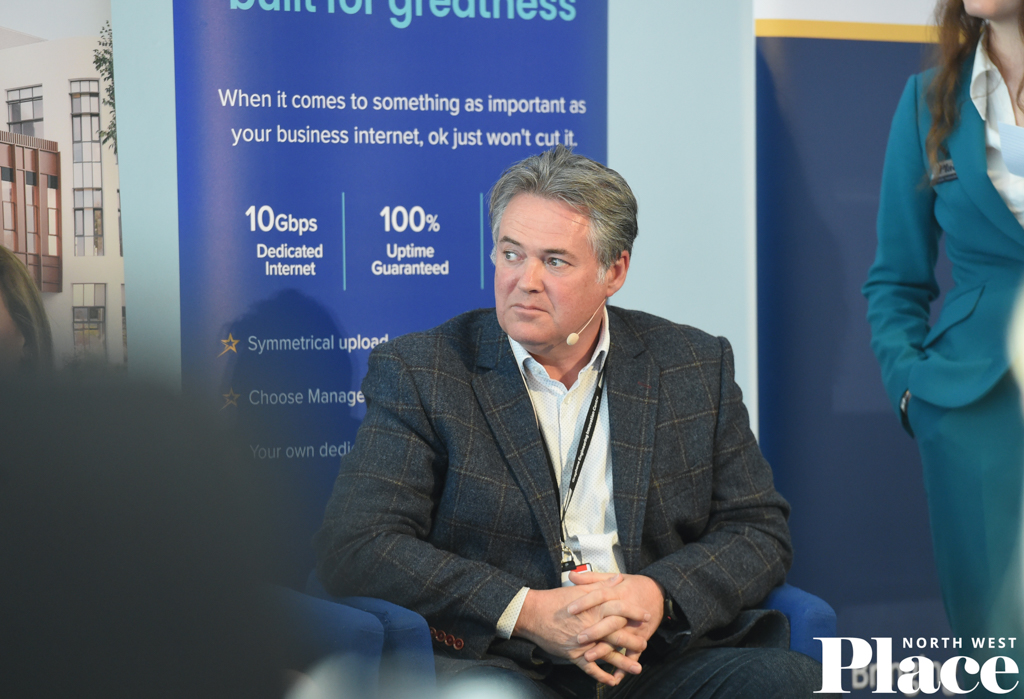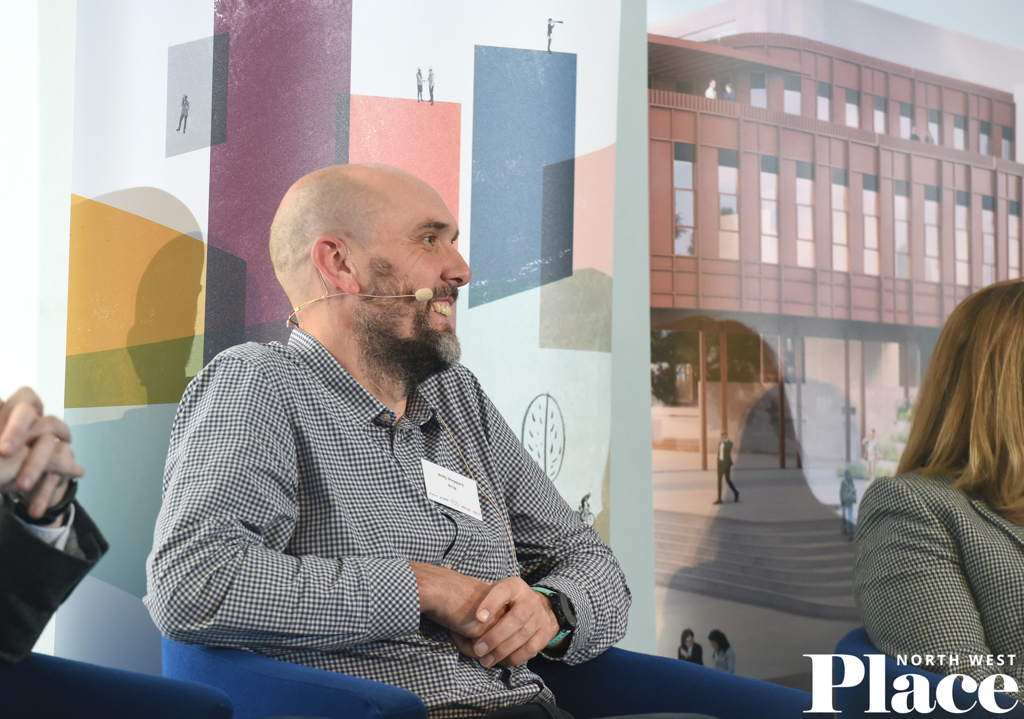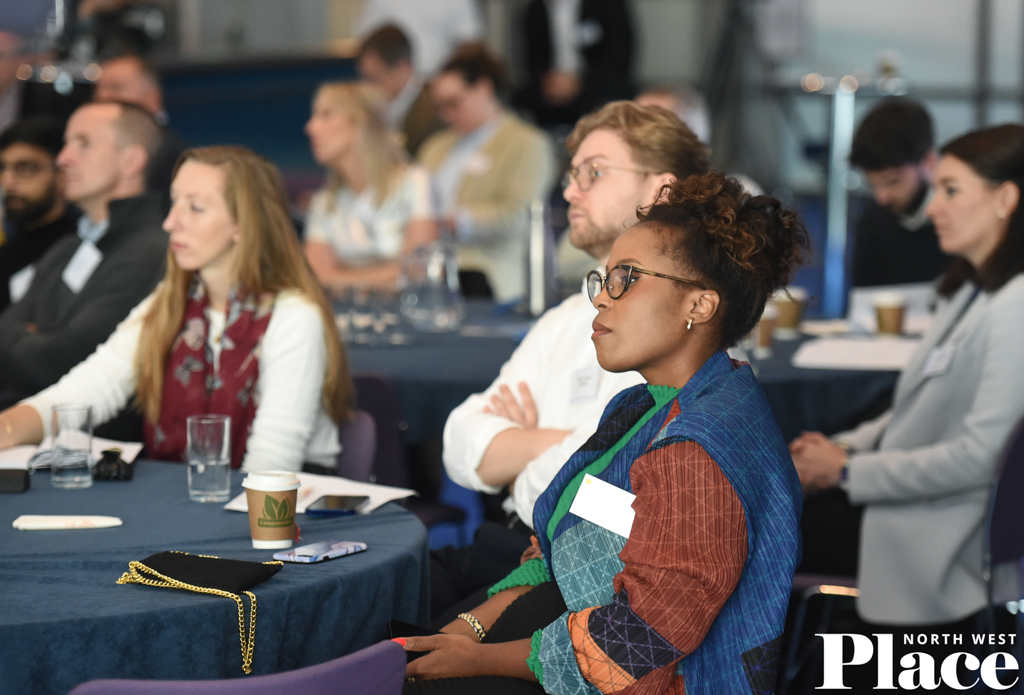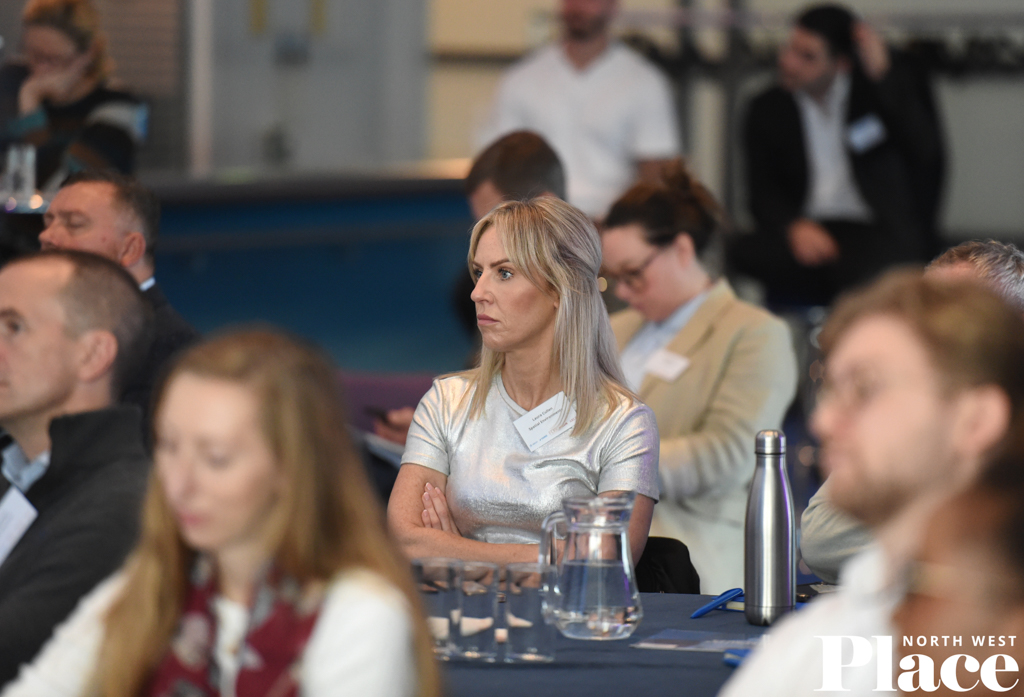Event Summary
Innovation in Property | Photos, slides, and summary
How are we pushing our industry to do better and embrace technology to stay relevant? That was just one of the questions asked at Place North West’s Innovation in Property event in Manchester on 21 September.
The sponsors were Telcom, Yardi, Fairhursts Design Group, Hollis, and Arup.
Brain drain
Losing the UK’s intellectual property was a big concern for Susan Patterson, sector development manager at The Manufacturing Technology Centre, in the first presentation of the day. She said: “We’ve got universities and we’ve got inventors, but we don’t invest in IP here so it goes overseas and we buy it back.”
She’s well placed to see the problem as The MTC is funded by three universities – Birmingham, Loughborough, and Nottingham, though it works with many more. The organisation is made up of 850 experts working across all the major sectors, from aerospace to food and drink, and is adapting their processes and discoveries for the property industry.
“We want to move the construction sector to more of a manufacturing approach,” she added. “Build faster, be more productive, and that helps the economy.”
Part of its focus is future skills, developing a curriculum and apprenticeship programme, and ensuring there are highly skilled people ready to deliver new technology.
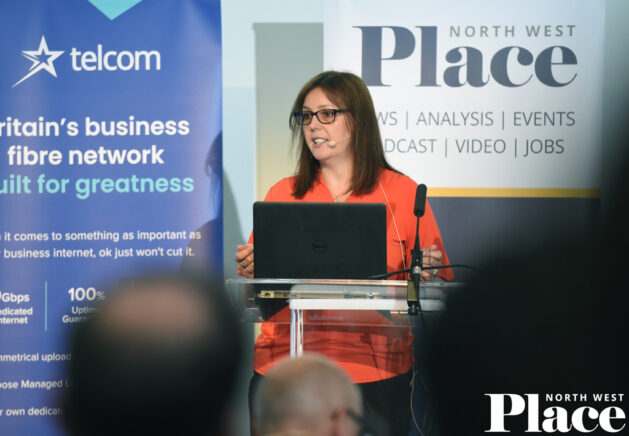
Susan Patterson, sector development manager at The Manufacturing Technology Centre, kicked off the morning with an informative presentation. Credit: PNW
Facing failure
A strong theme throughout the morning was that failure is nothing to be feared – and is actually a positive.
Patterson said: “Fail fast, learn fast.”
In his presentation, Justin Harley, regional director for Yardi, added: “If you don’t fail a few times you’re not doing it right – you are not testing hard enough.”
Meanwhile, Andy Doyle, innovation director for Grosvenor, said his company has turned failure into a positive: “People don’t feel fearful for their job if they do something wrong. They are telling some important stories. It’s about trialling something on a small scale initially to prove the concept.”
Mike Harrison is the chief operating officer for Concretene, a product being created in partnership with the University of Manchester, which uses graphene to improve traditional concrete. He gave an example of very early days in the laboratory – when the technician forgot to log the key processes and temperatures. He added: “We had a video but they didn’t write it down…”
Robotics
Patterson also detailed some of the robots her team works with such as Ratty, who is used to inspect pipes and the like, detecting cracks and defaults using e-ray technology, and Spot the dog, a fully-autonomous four-legged character who works in sectors ranging from nuclear to transport, and even agriculture depending on the surveillance equipment he is fitted with. She gave one example: “He can go around a crop field to detect how much pesticide is needed, then they can supply the exact amounts.
She added: “It’s about keeping people out of dangerous environments, not replacing people. We are transforming our industry to be more productive. Look at the analysis of where robots can improve that productivity.”
Keeping it simple
There was a sense of caution from all of the event’s speakers about innovating in the right way, not just because someone thought their business should.
Harley said innovation was not always about massive changes: “It’s about tweaking and adapting, about interaction, conflict, and discussion. You have to keep moving forward.”
But he added that though innovation could look appealing – like “lots of shiny toys” –sometimes they should be “put back in the box.”
“Don’t be seduced by technology. Have people in your business who are researching the art of the possible,” he said.
Meanwhile, Tom Willcock, director of innovation at Hollis, said making the change didn’t have to be about “fancy technology.” He detailed a company that wanted to reduce its operational energy by 5%, and all it needed was a design change. Its building had doors front and back so, as the wind gusted in, they were heating it on its way out.
“Know your asset,” he said. “Find out what’s going on. It could be data that’s not properly organised, not having building plans, or they don’t know what it’s made of.”
Attention to detail
Harley gave examples of how tech could work brilliantly in the property industry where operators often had thousands of residents to manage, but where putting agents in a call centre would prove costly. He is working with companies using AI and chatbots to answer tenants’ queries and estimates that this has saved around six hours of human time, with 82% of outgoing communication – 49% of which was sent out of normal office hours – handled by the technology.
“Look at your database of information,” he said. “If that database is clear, accurate, and large, you can apply tech to that. AI can learn their language and slang. There are so many exciting possibilities.”
Drone capabilities
Willcock is a huge fan of drone technology, with his teams flying across Europe every day, doing everything from mapping to roof inspections
He spoke of how drones proved vital in everything from transporting covid samples during the pandemic, to moving cancer drugs from the British mainland to the Isle of Wight. “They will completely revolutionise distribution,” he said. “Drones are utterly ubiquitous now. You’ll find surveyors with drones in their pockets.”
What not to do
When asked for advice about how to make the first step to innovate and review a business’s systems, Harley was clear: “Don’t involve IT. Why would you involve them in a business problem?”
Willcock enthused about strong sustainable practices of the past – including the simplest ideas of refillable ink pens and milk deliveries. He said: “Take a cold hard look at yourself. It’s really easy to spend a lot of money on the sexy stuff out there.”
Though, Harley got one of the biggest gasps of the day when he revealed one – unnamed – client had said ‘we want to take cheques!’
RAAC response
Patterson said the recent headlines about failing reinforced autoclaved aerated concrete raised the issue of traceability. She used the example of checks in the food industry where greater attention was given to a £1 meat pie than the property sector focused on a building worth more than £50m. “We need to record data on new stock and look at how we track old stock. That needs to start today.”
Harley questioned whether human intervention could have exacerbated the problem – like a lack of maintenance or tracking and tracing where RAAC existed – and also added a broad view: “If you are still doing something the same way as 10 years ago – stop.”
Harrison agreed: “There is a lot of emotion about RAAC but a lot of the problems could be maintenance-driven.”
Decarbonising concrete
Harrison showcased the use of innovation in creating new products, like the Concretene being created with academics and other strategic partners – bringing to life new building materials and taking them from laboratory to construction site.
They are using graphene – more commonly found in car parts and polymers – to improve concrete. More specifically, they are using graphene nanoplatelets, or GNPs – graphene in a powder form – as it is more cost-effective.
“Concrete is here to stay,” he said. “By modifying the microstructure we can improve strength and durability. It’s a tweak of a recipe to make it perform better.”
And he explained Concretene didn’t have fancy origins – early versions were literally made with Moulinex mixers.
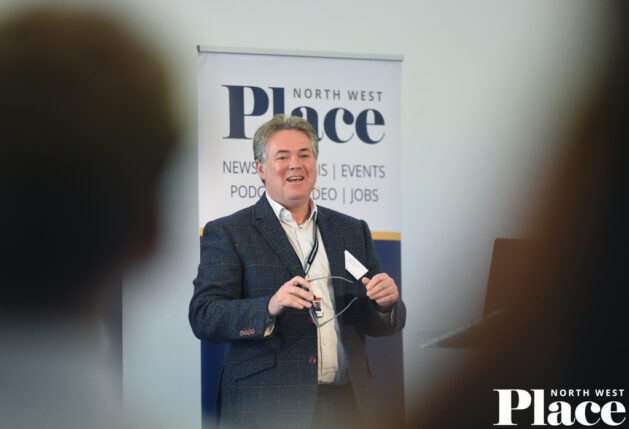
Mike Harrison, chief operating officer at Concretene, demonstrated the use of innovation in creating new products. Credit: PNS
Think long-term
Harrison also cautioned property professionals against letting money rule decision-making. He said: “Rather than going for the cheapest, you should take a whole life approach. Take a balanced, informed view.”
Hatmaker asked why, amid government uncertainty over environmental targets, the property industry should commit to sustainability.
Andy Sheppard, associate director at Arup, said property companies would be judged at the end of their first lease, as well as in 30 years’ time when they came to be renovated: “Your building will be compared with other buildings as we get to net zero, irrespective of what the government is doing.”
Grosvenor’s Doyle added: “It’s what we should be doing as responsible businesses.”
People power
Hatmaker also asked why businesses should bother to innovate now – and what the biggest obstacles are.
Doyle said: “It depends on your perspective of what ‘innovate’ means. A simplistic view is it’s a fancy word for coming up with better ways of doing things.”
Sheppard added: “’Now’ is scary. We should be trying to think about doing something different, tweaking what we know about. That’s much easier – it’s an anchor to hold on to.”
Laura Sherliker, director at Fairhursts Design Group, said the blocker could be the most obvious things: “It’s perception of risk, time, and money, and how you educate your client around that.”
Sheppard also said: “The biggest barrier is people. A lot of innovation is a change process, yet people focus on the technology side of this. We work with behavioural and occupational psychologists. We take a real people-centred approach to understanding how people work.”
Doyle was in agreement and said his company has systems in place to deal with this: “How do you mobilise 250 people to think differently? Everyone in Grosvenor has an innovation goal. They see the value they can personally bring.
“Challenge the way things are done. That’s fundamental to everyone.”
Sherliker also said there were ways to get people inspired: “Leadership, education, bringing people in to the discussion. They have to be part of the conversation.”
Harrison added: “It’s culture and acceptance. It’s leading from the front. If you are not wired that way, people won’t accept it.”
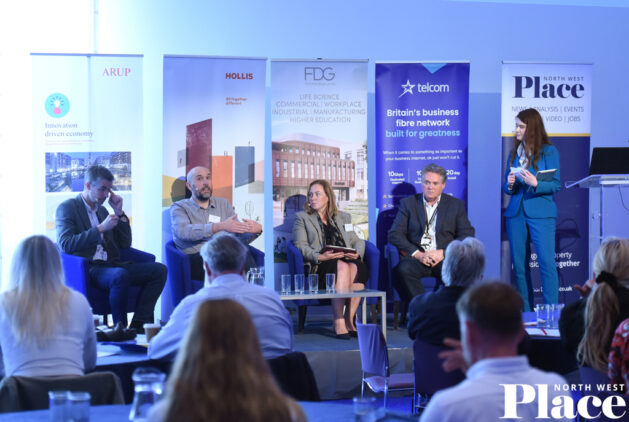
From left: Grosvenor’s Andy Doyle, Arup’s Andy Sheppard, FDG’s Laura Sherliker, Concretene’s Mike Harrison, and Place North West’s Julia Hatmaker. Credit: PNW
Exciting times
The panellists were asked what innovative ideas had them buzzing.
Sherliker said she’d been looking at a Spanish development which was using AI to transform architectural practices: “You can upload a plan and alter the mix of units – you draw in the site and apartments will appear. It will sort out the most efficient car parking. It’s very quick so then you can focus more on the placemaking.”
Doyle is also enjoying the potential of AI, particularly around environmental issues. He said: “It helps track construction waste and keeps a record of where materials have come from and are going to. There’s always been a clipboard exercise on construction sites but this is using technology.”
Hatmaker gave ONS figures which said in 2021 only 1% of the construction industry’s spend was focused on research and development.
Sherliker called for more crossover with other sectors, like automotive and aerospace: “We can benefit from their learning. There can always be more investment in R&D to move things forward but it’s also about doing things smarter.”
And she said communication was key: “People need to be talking about what they do and advocating that to the client. It’s about incremental change.”
Slides
What’s next?
Is the North West office market thriving or flailing? Has the work from home bubble burst? Are we building too many offices or not enough? Learn what the answers to these questions mean for our towns and cities, both now and in the future. Book your ticket to our Offices + Workspace conference on 11 October.
Click on any image to launch gallery


